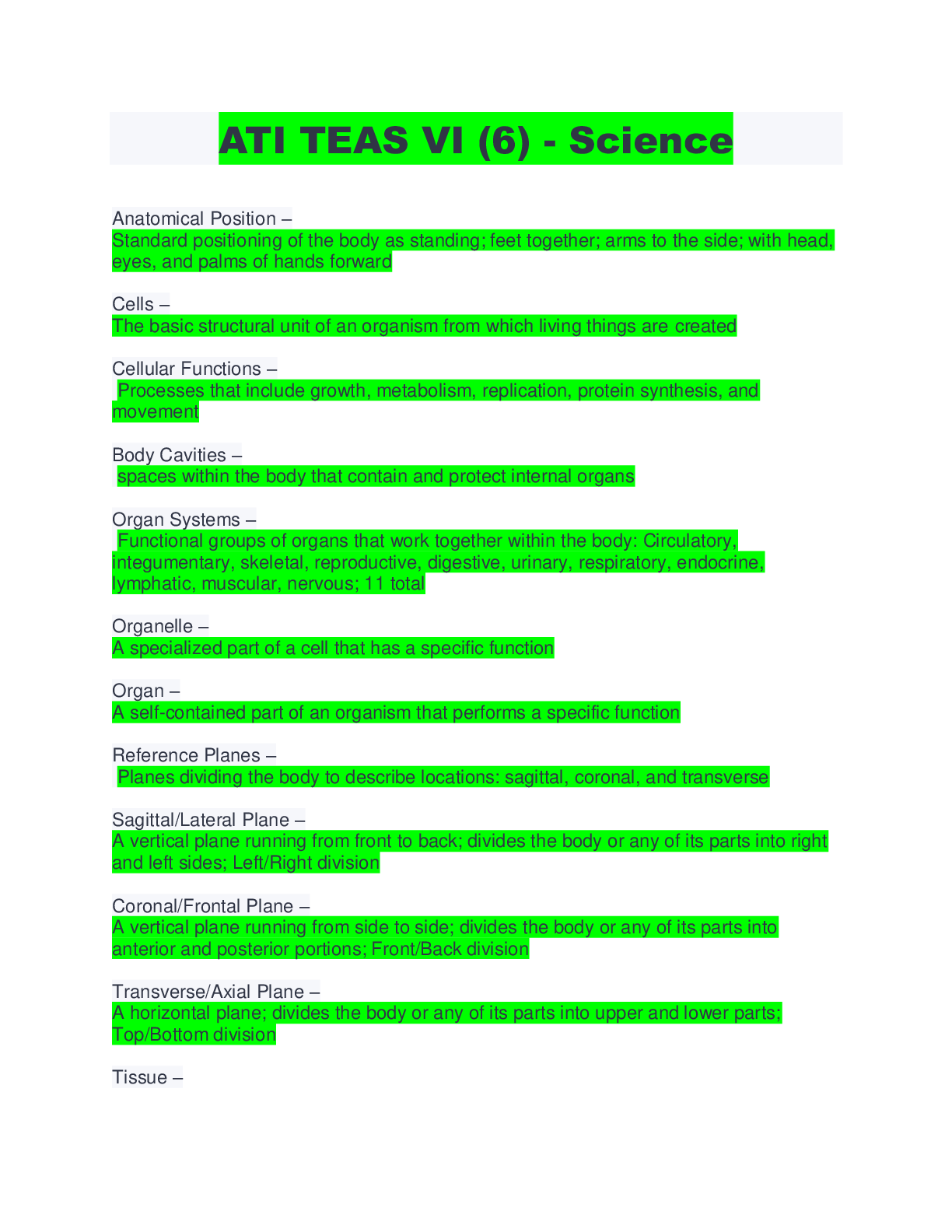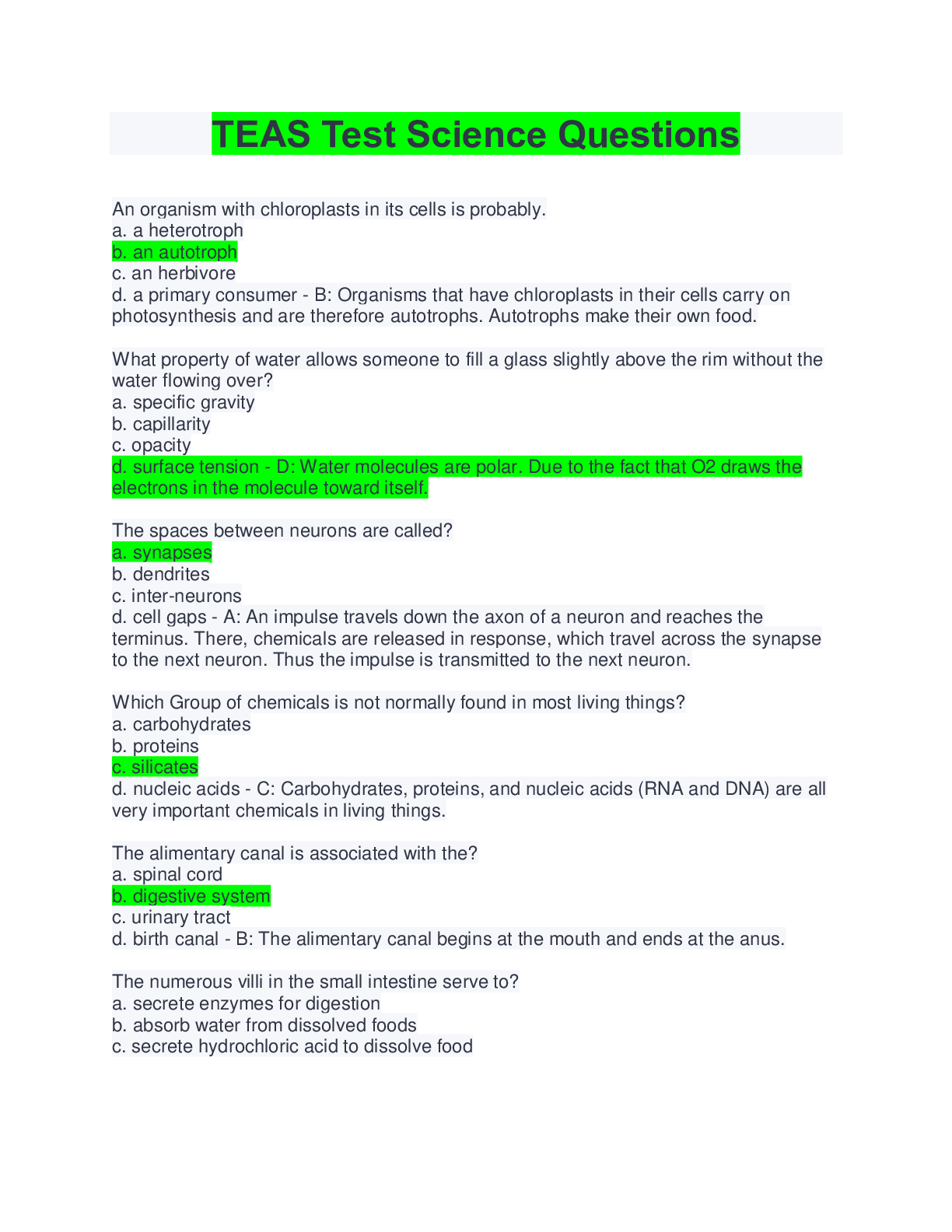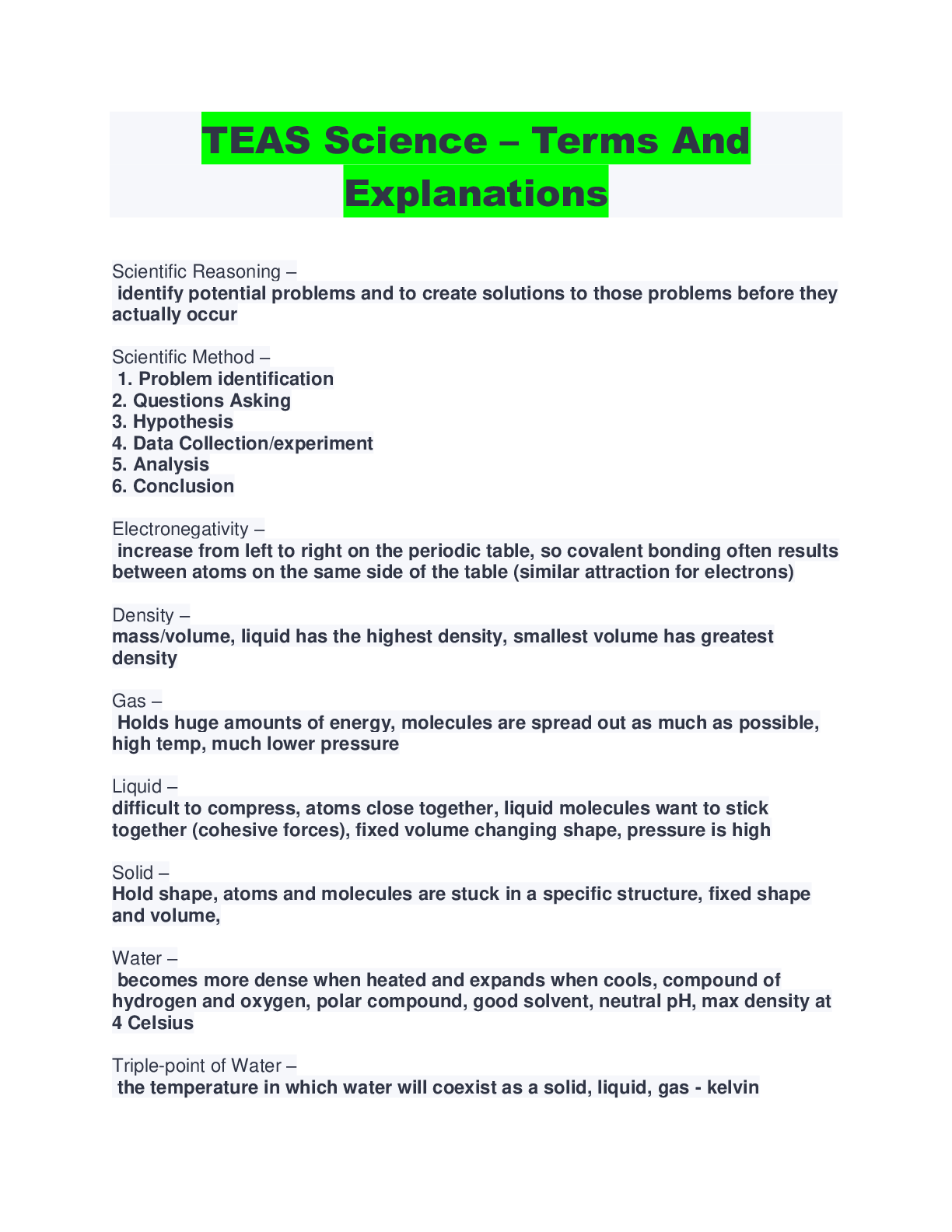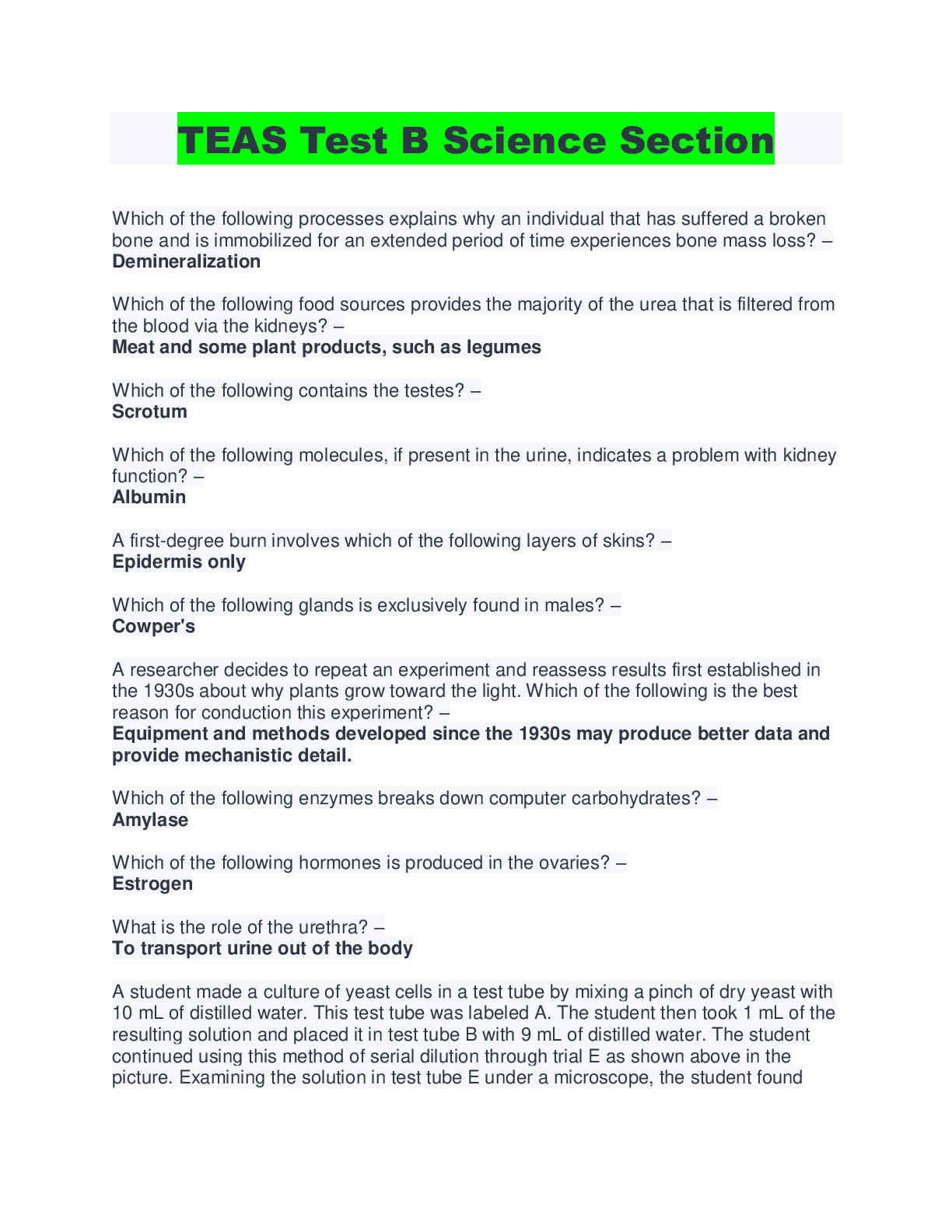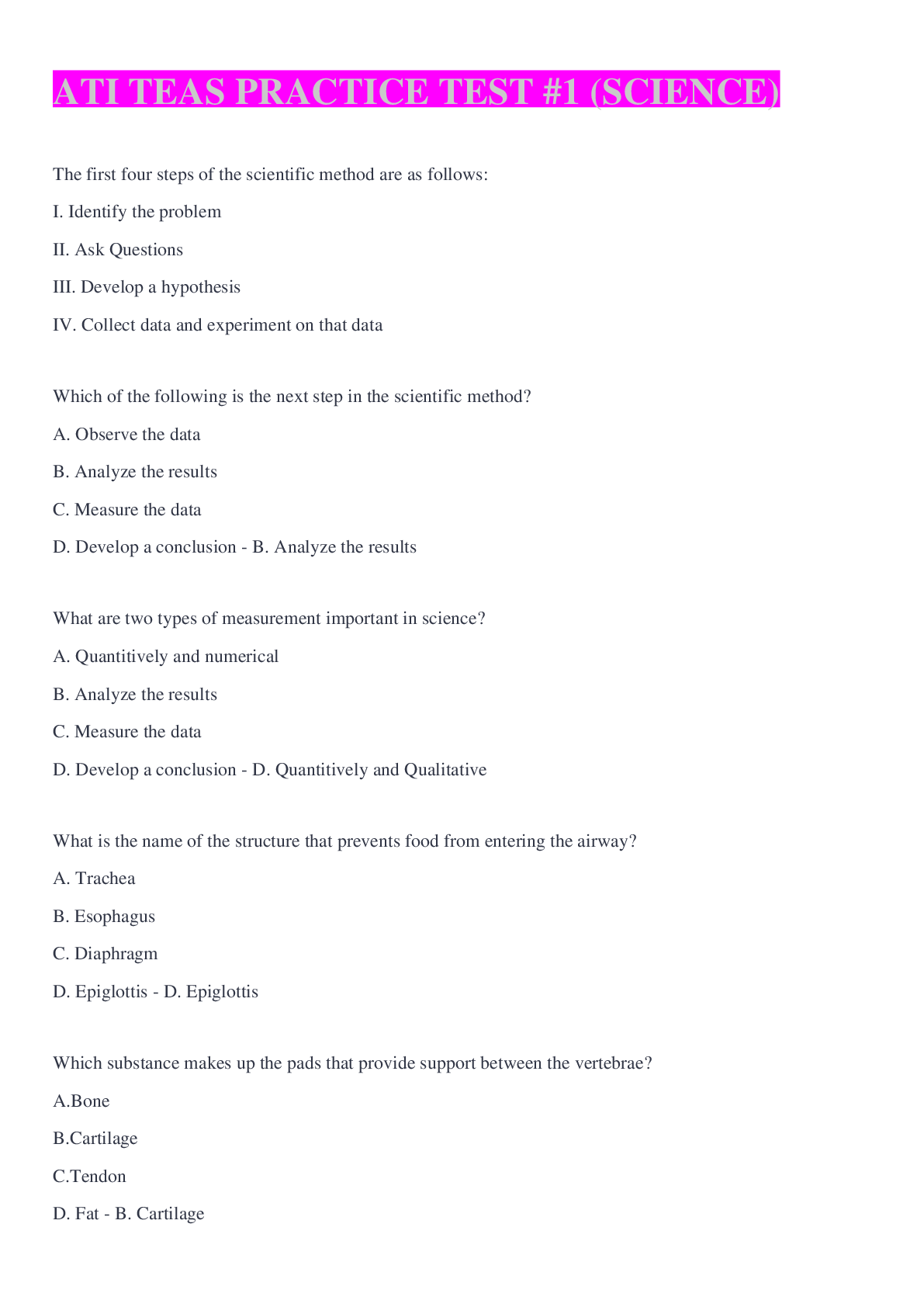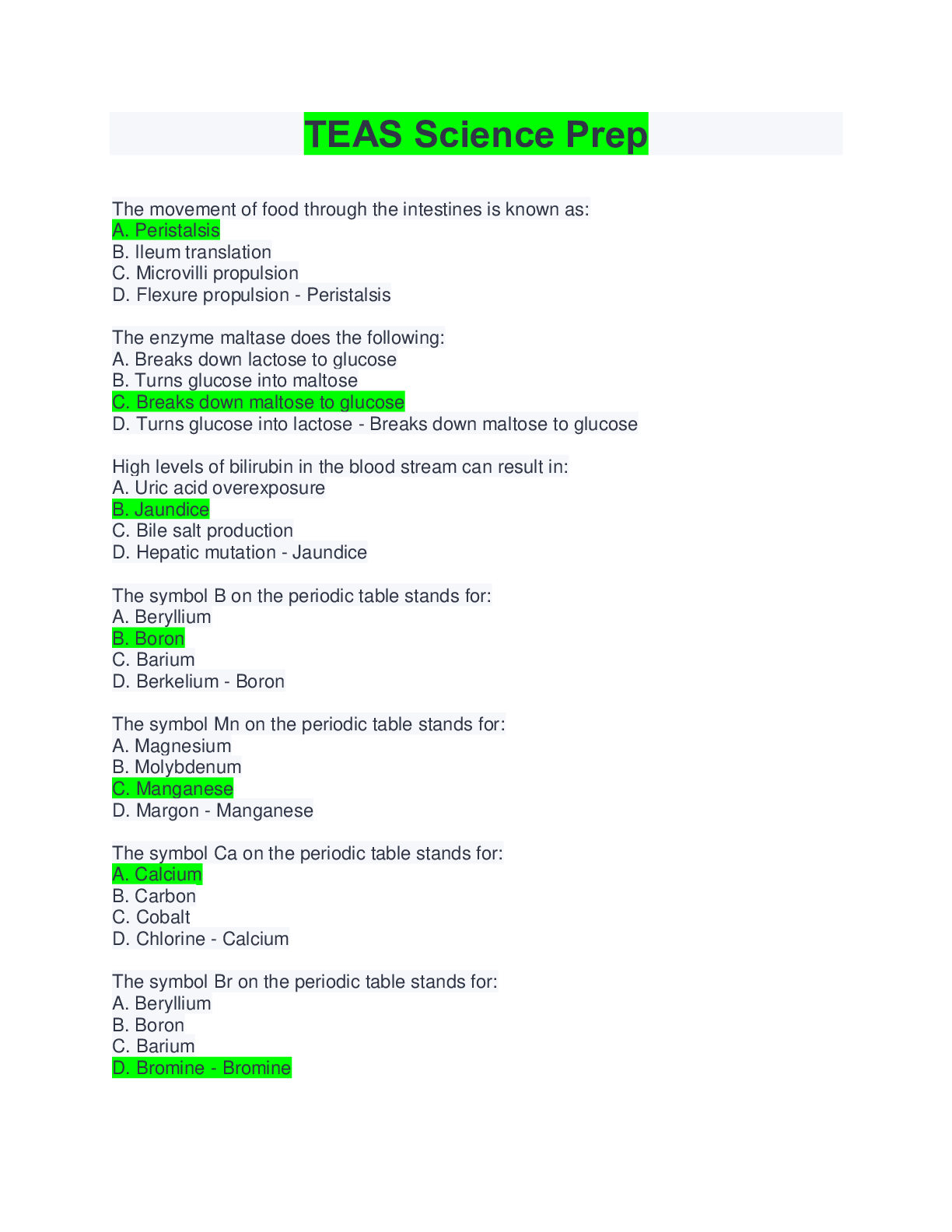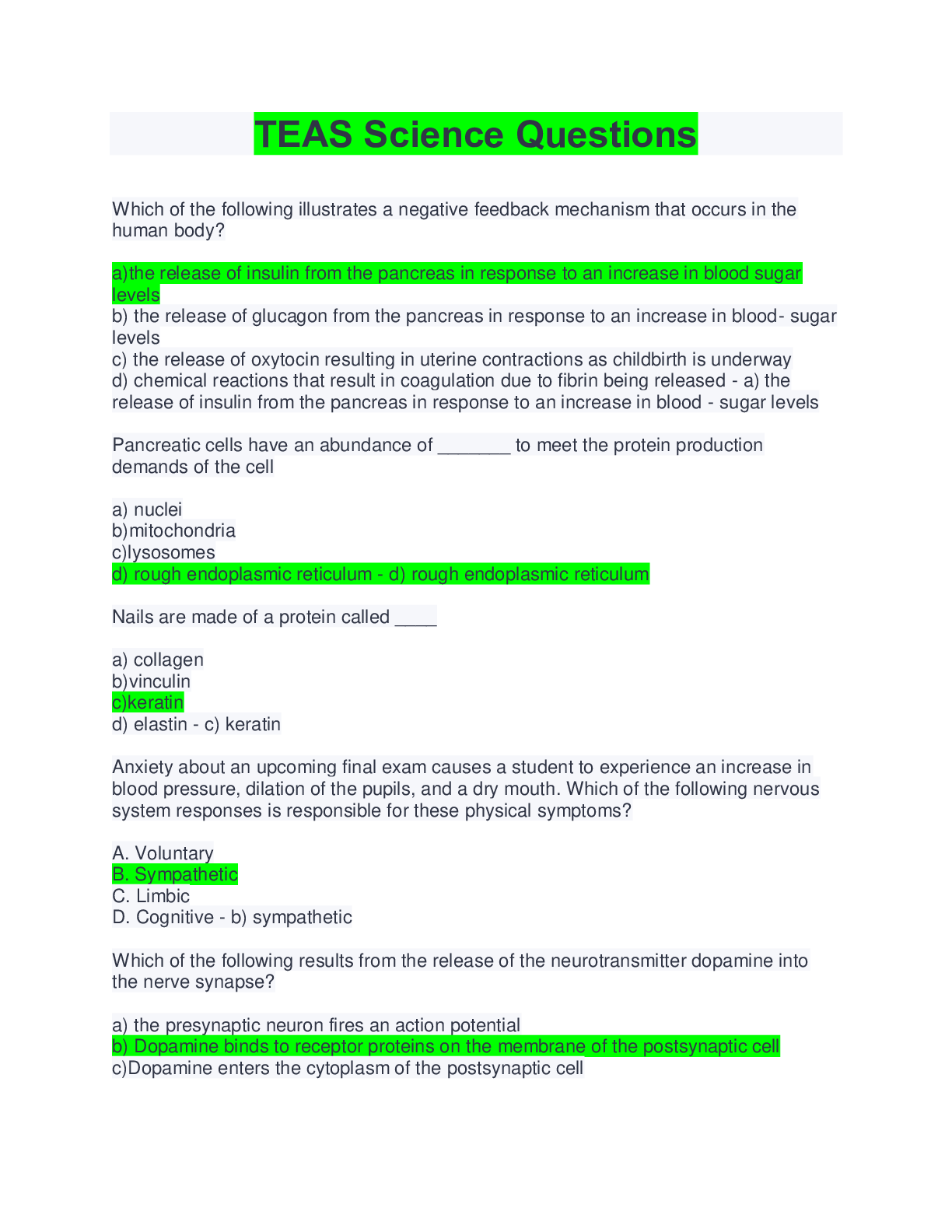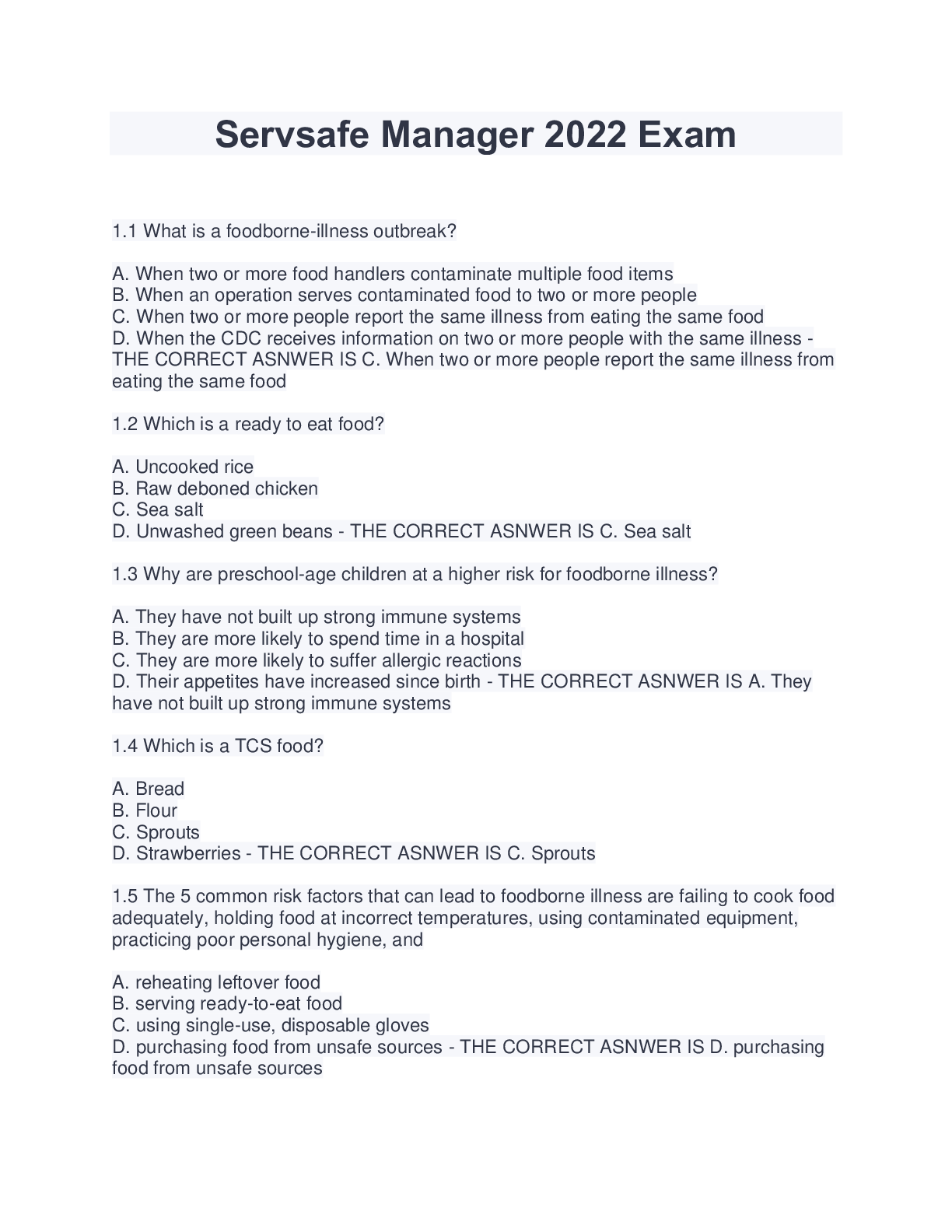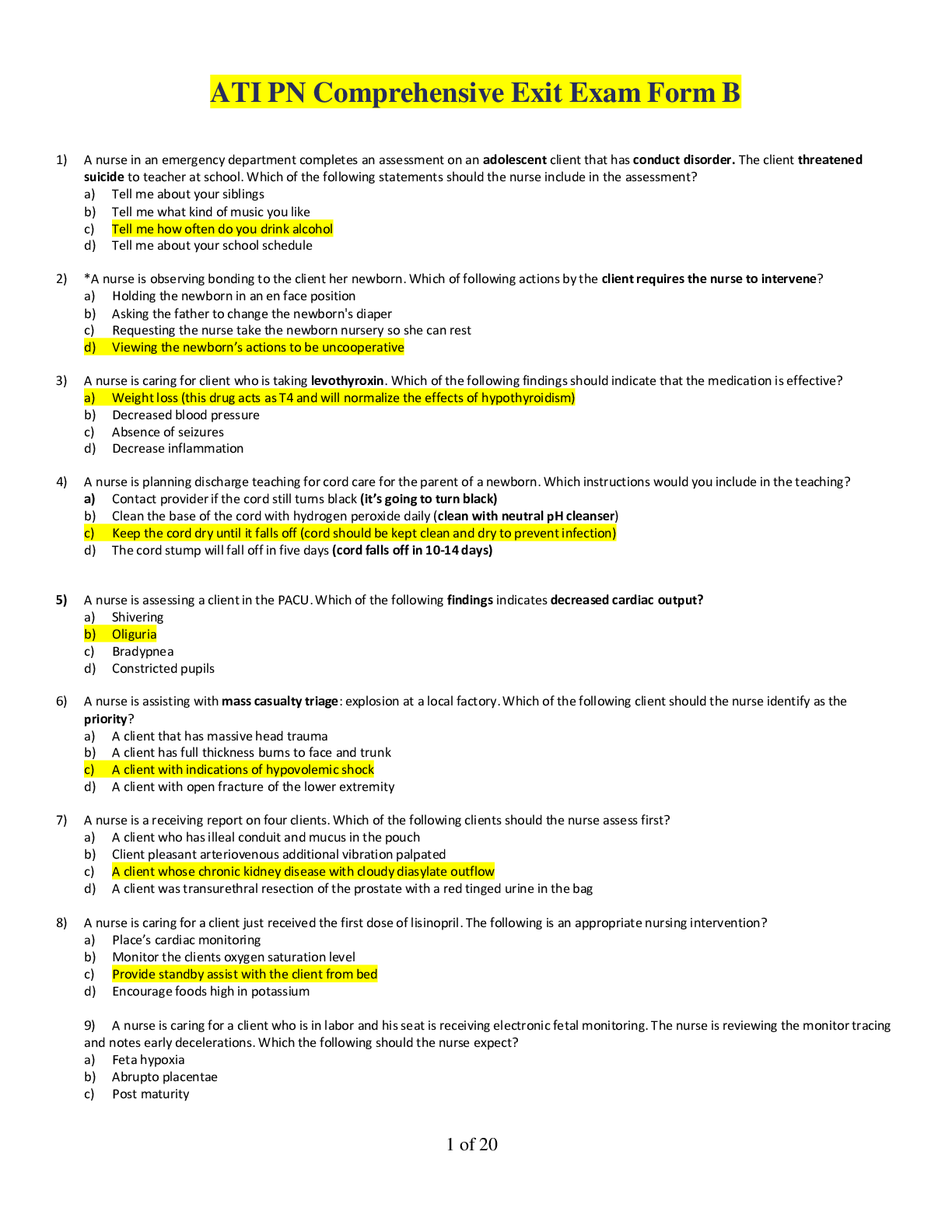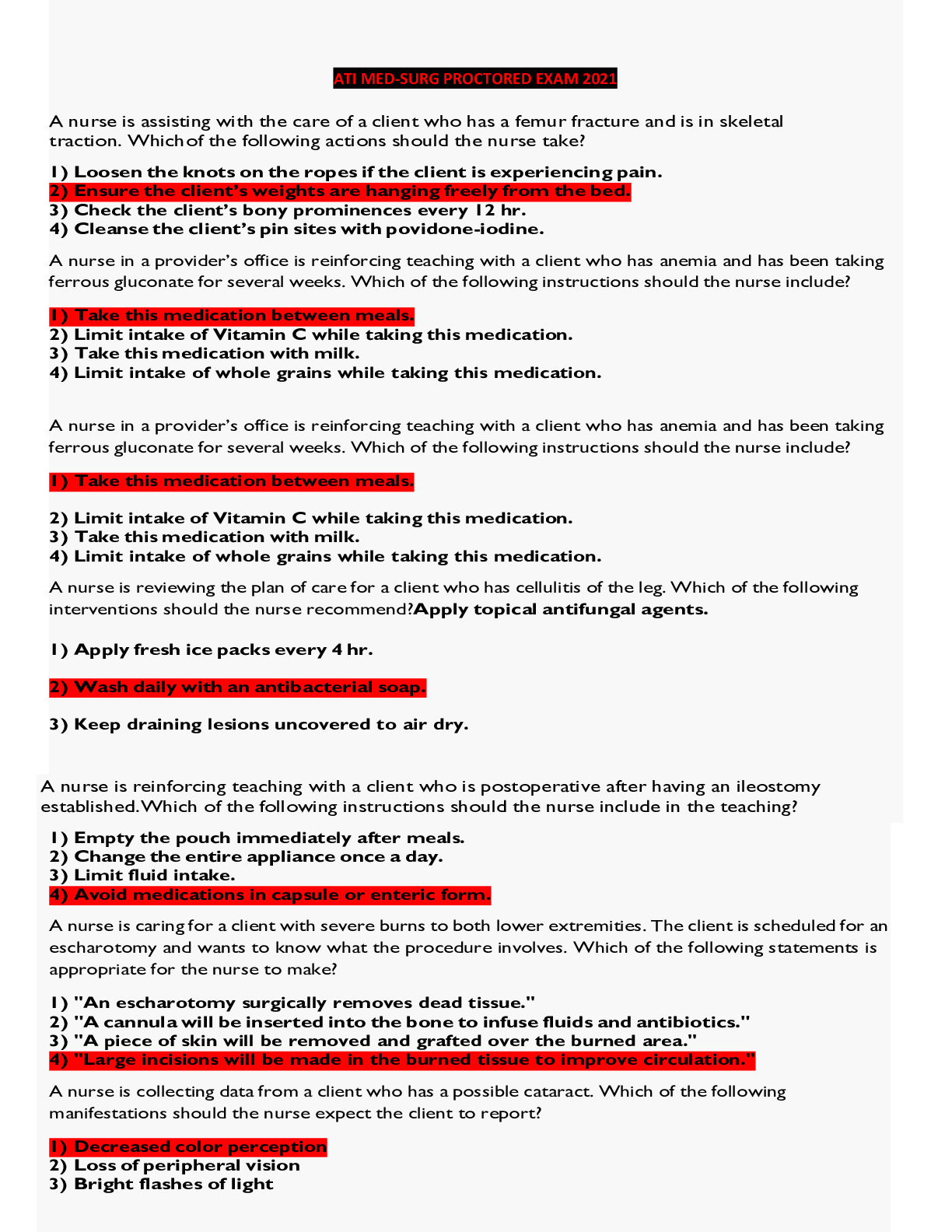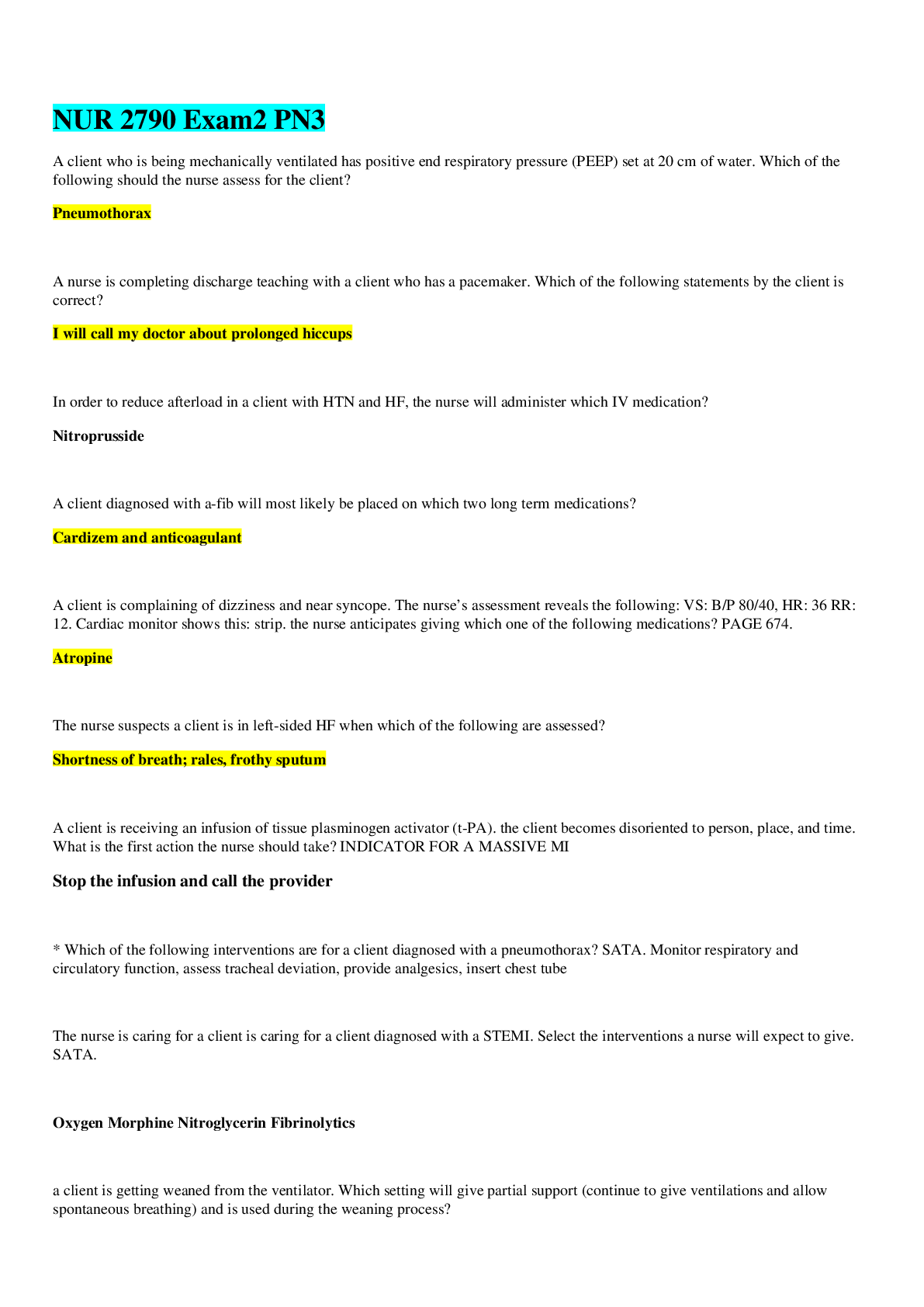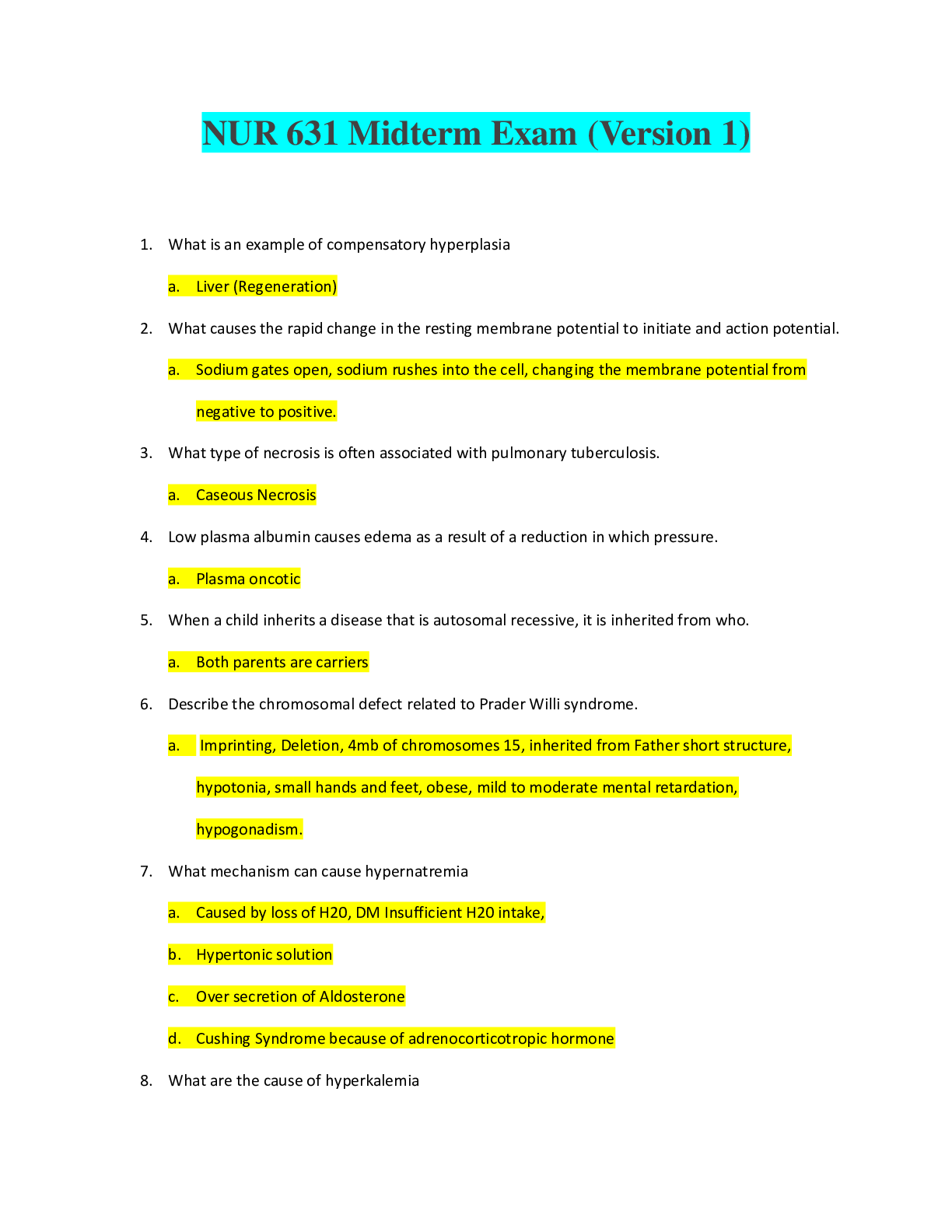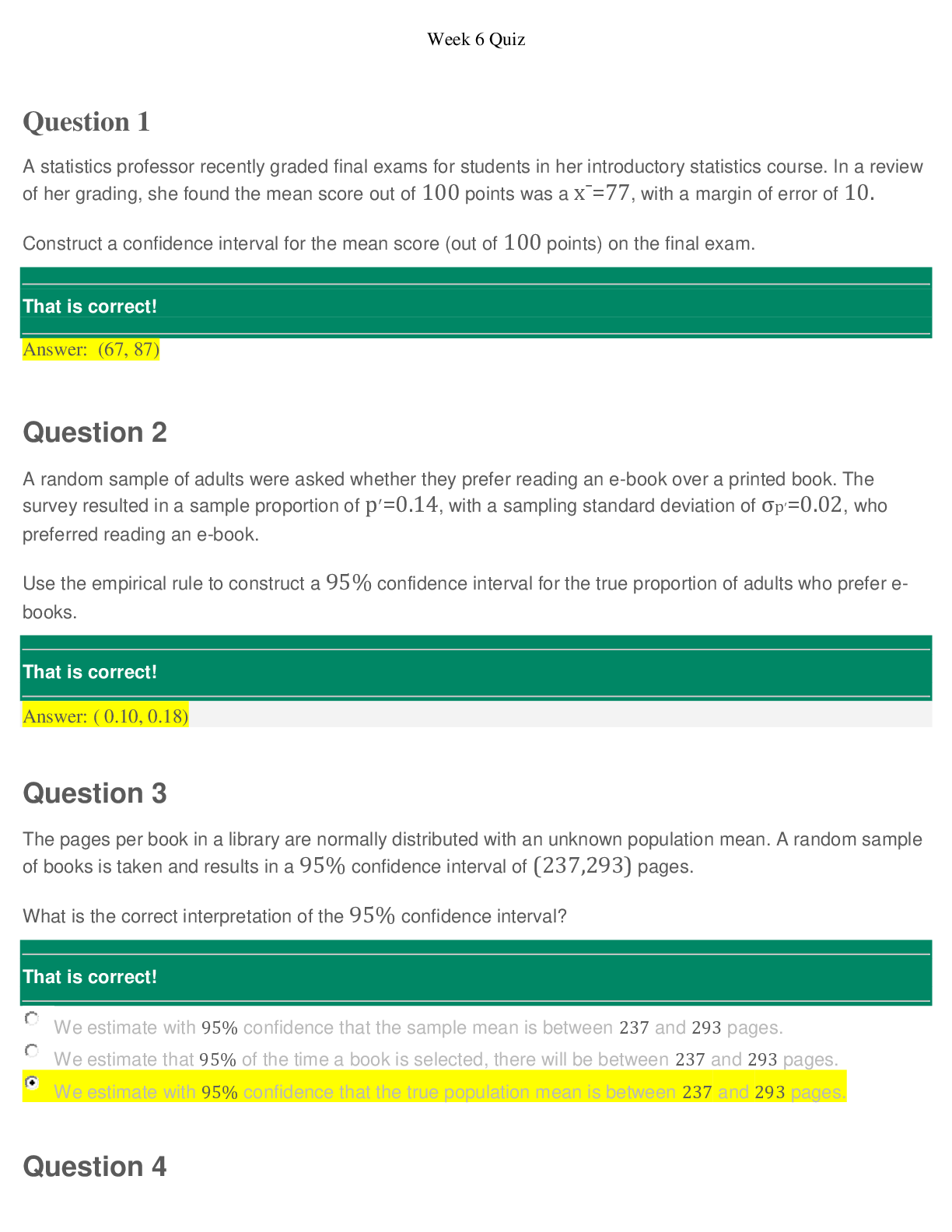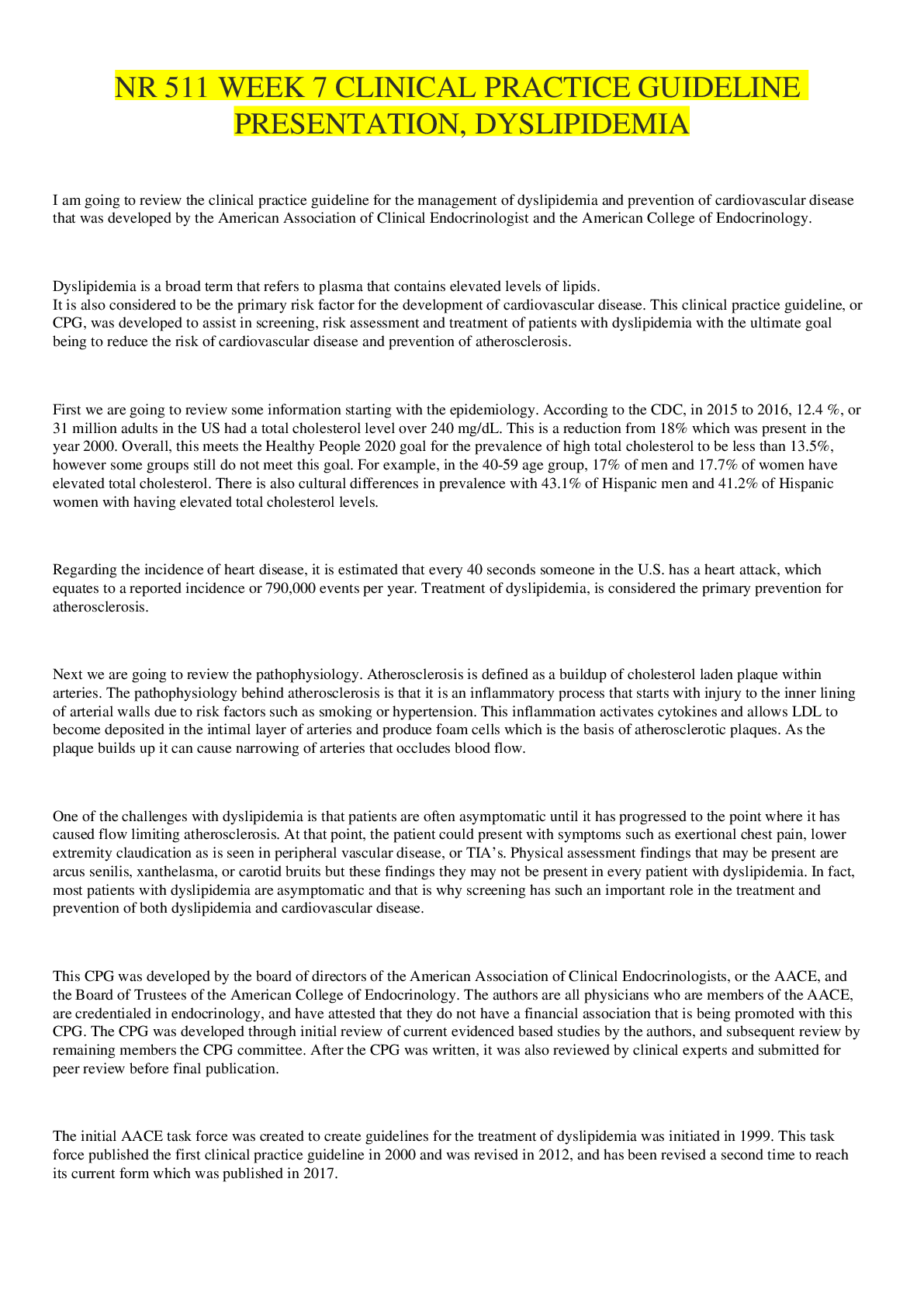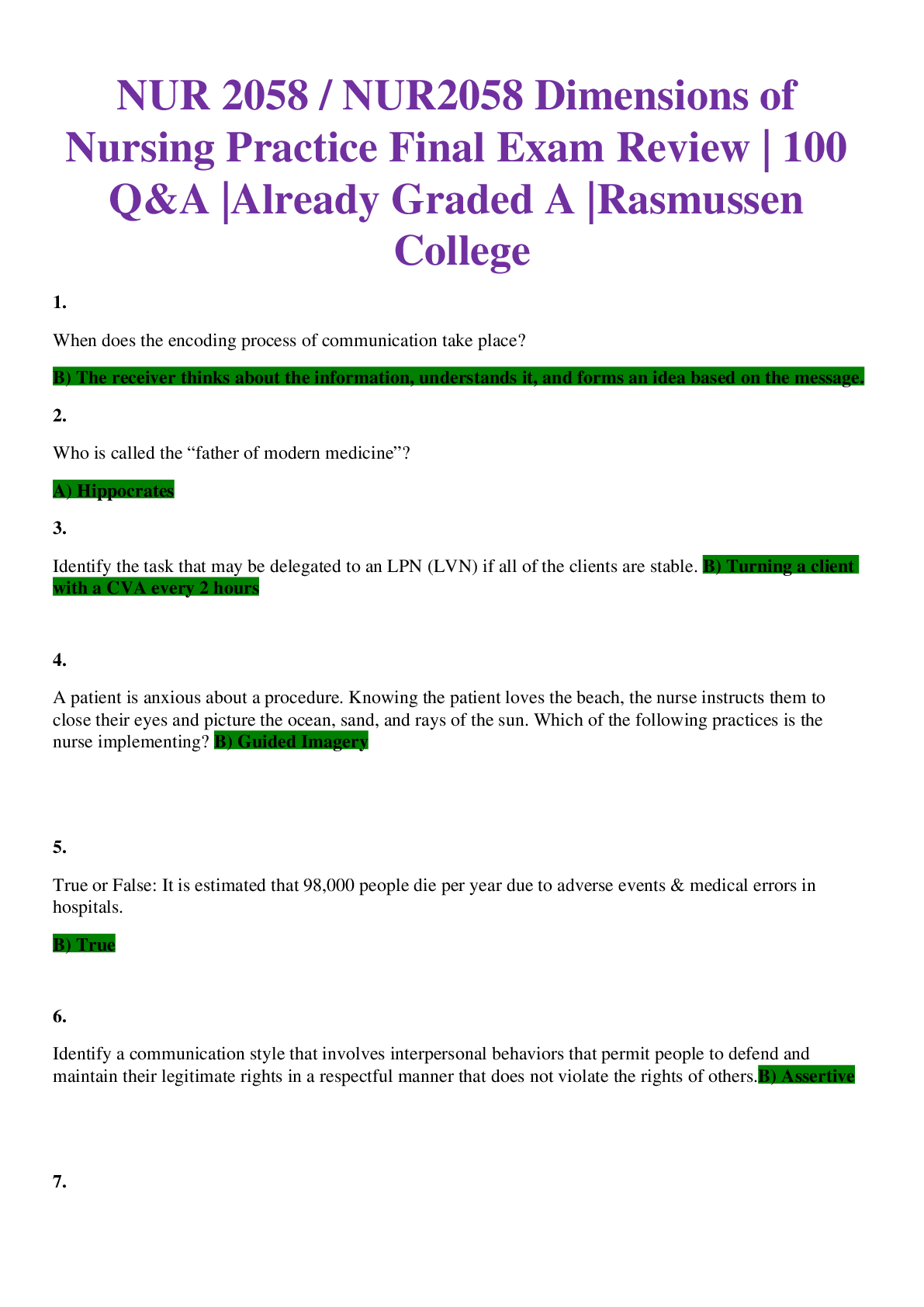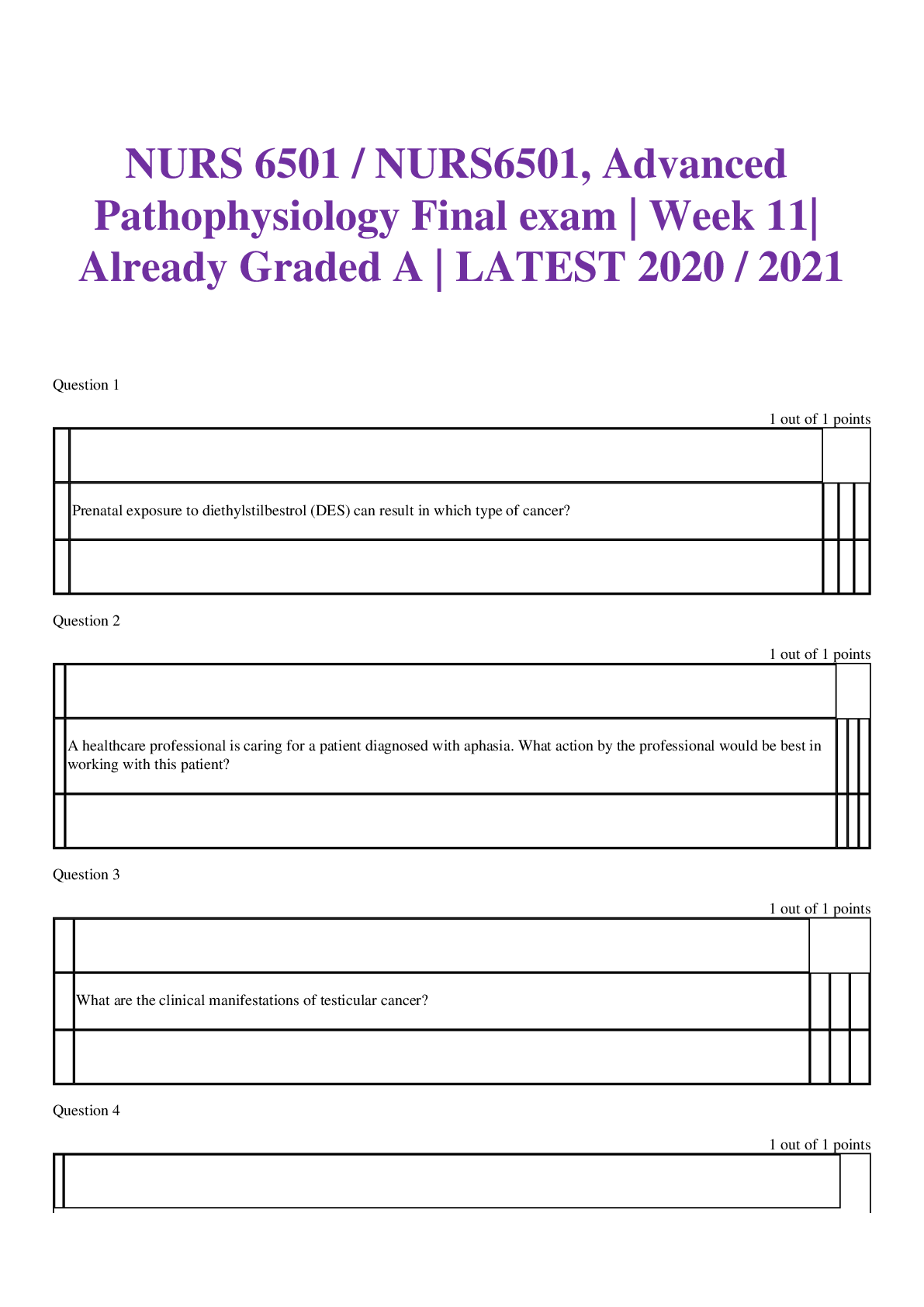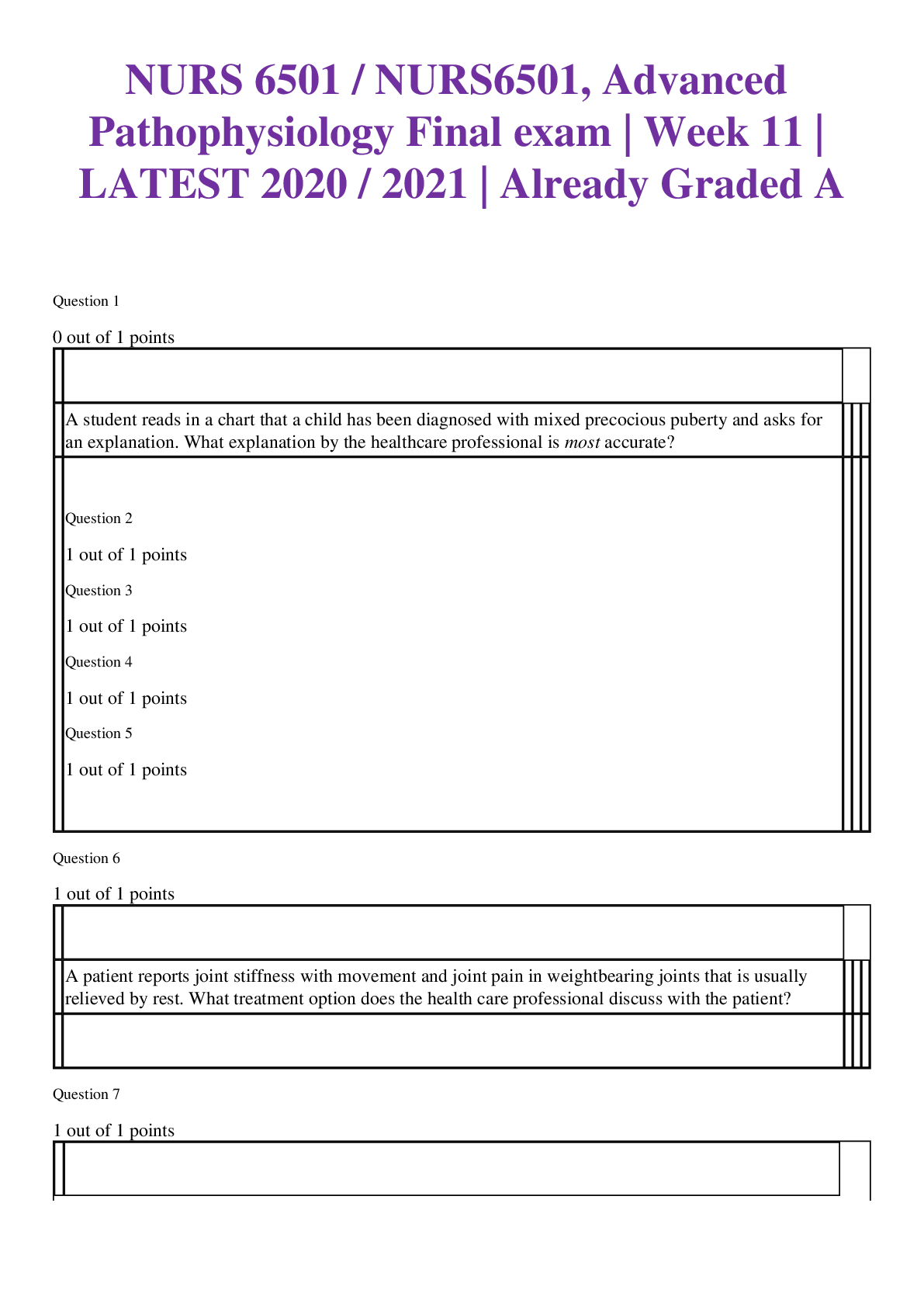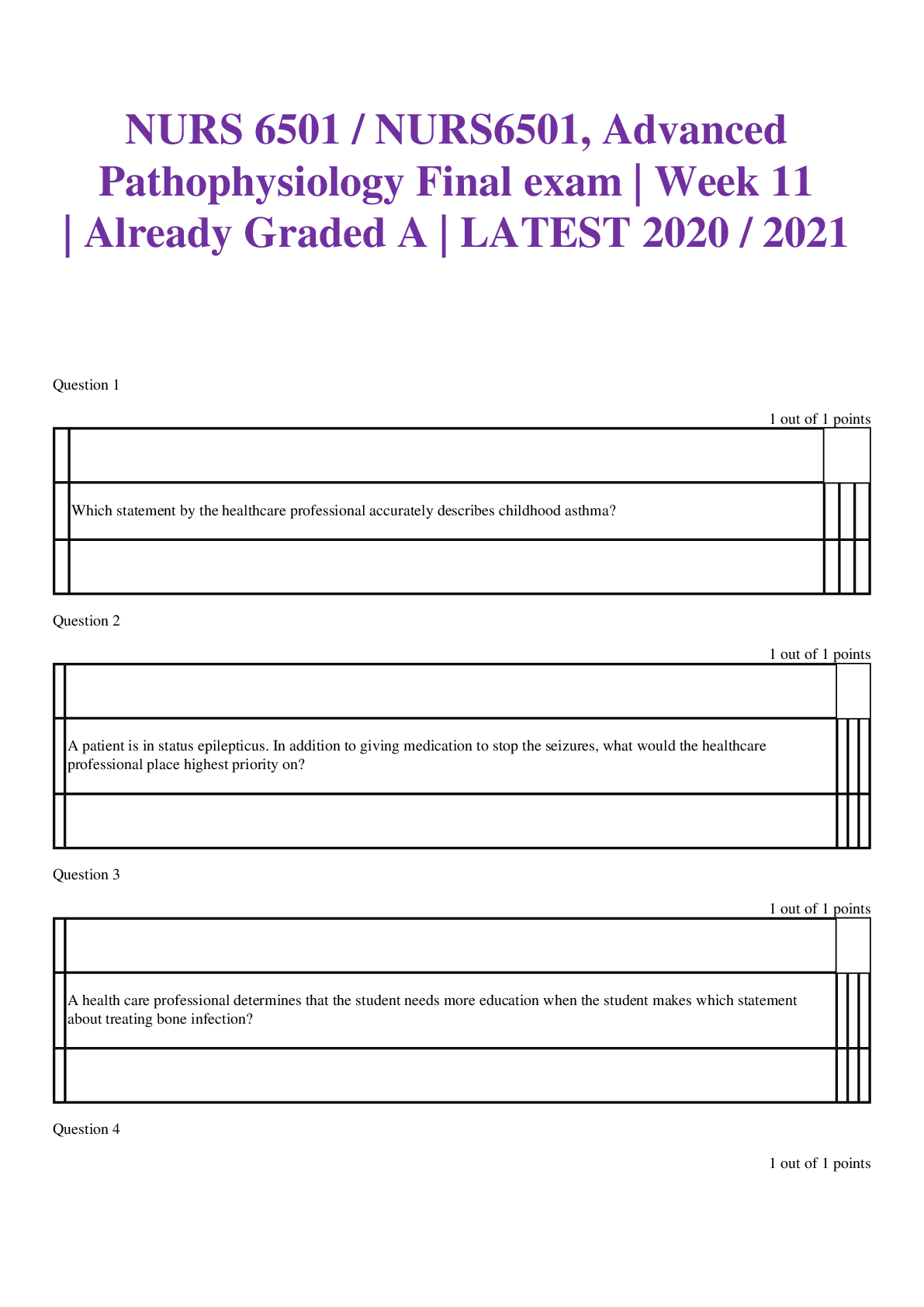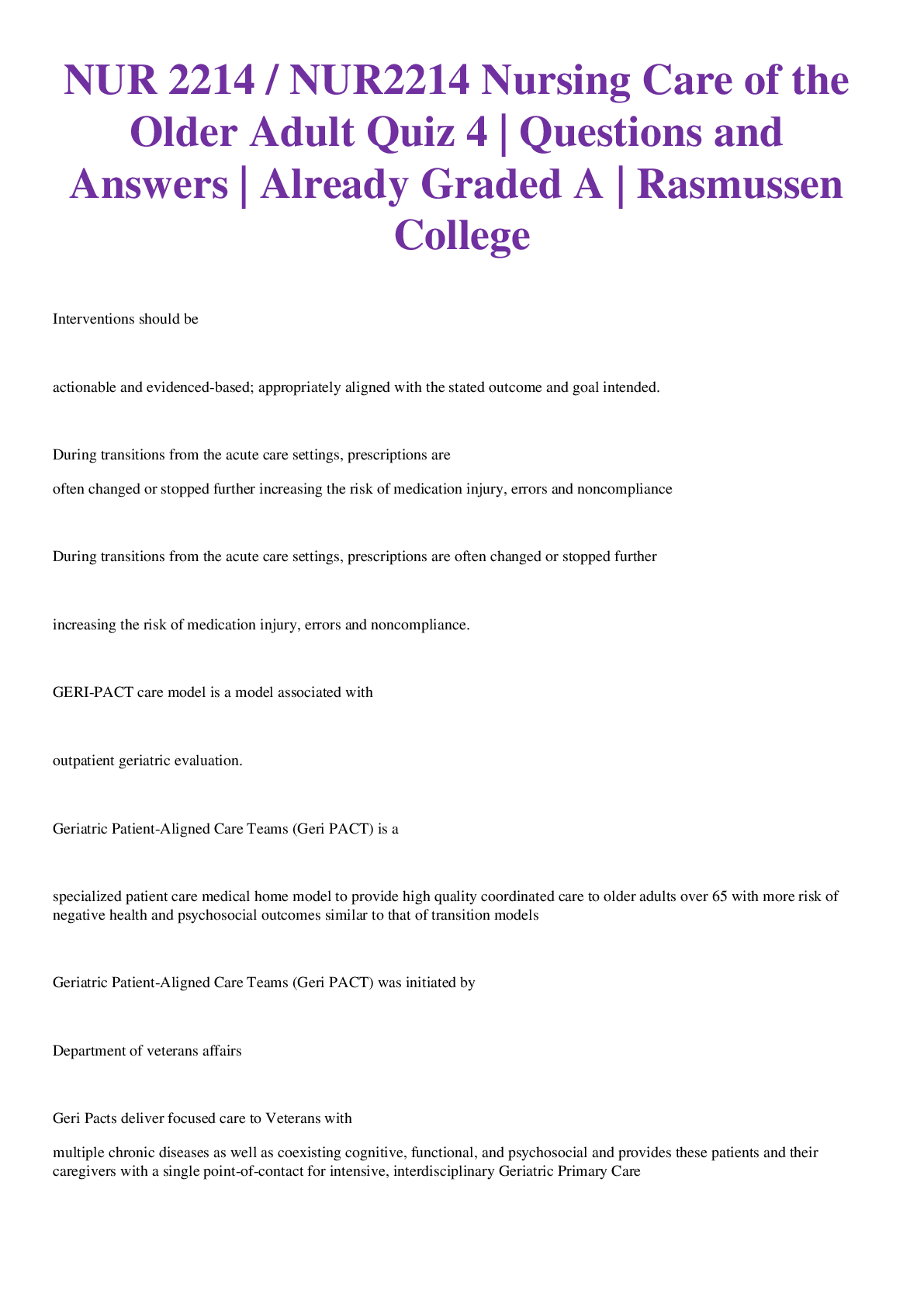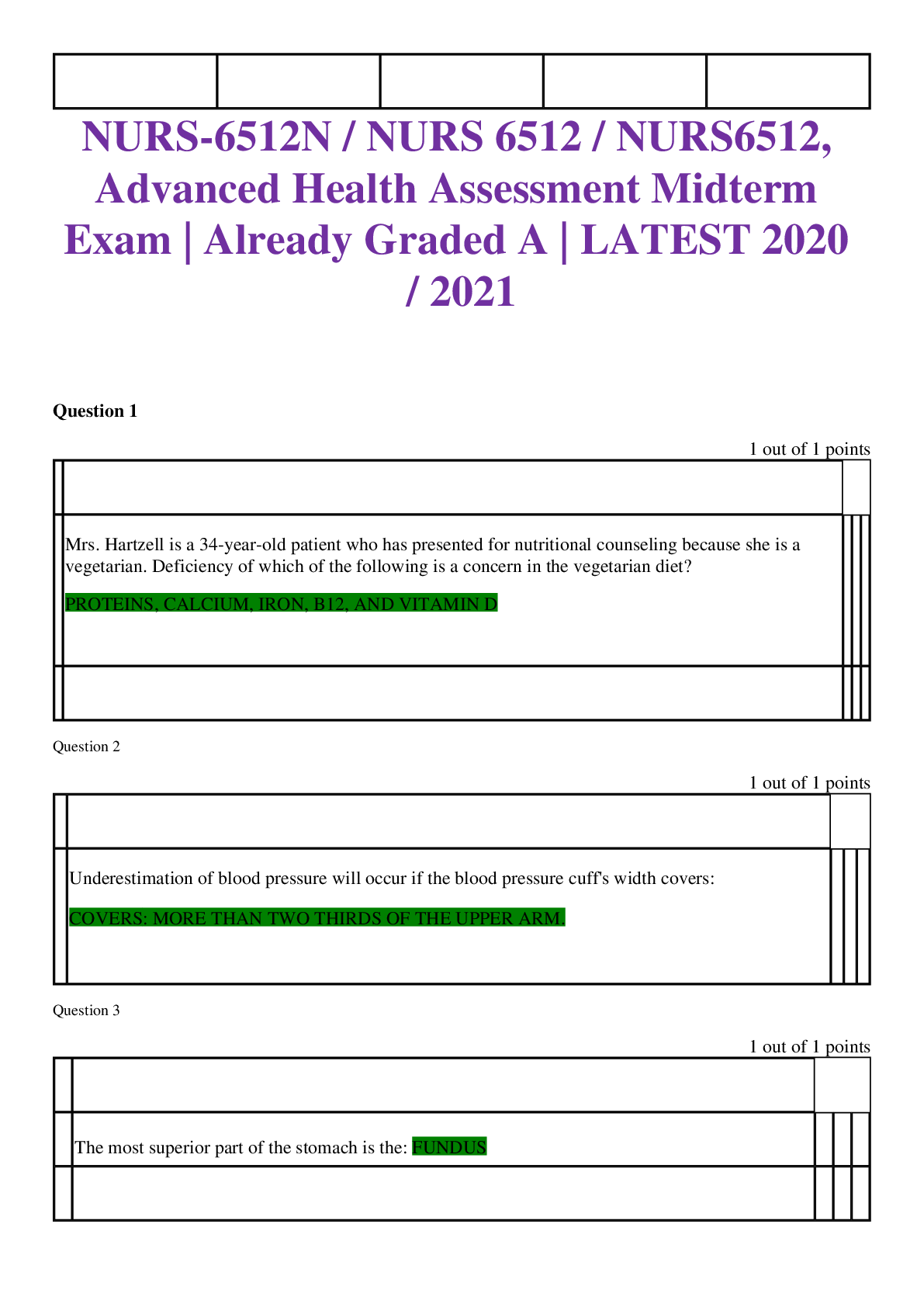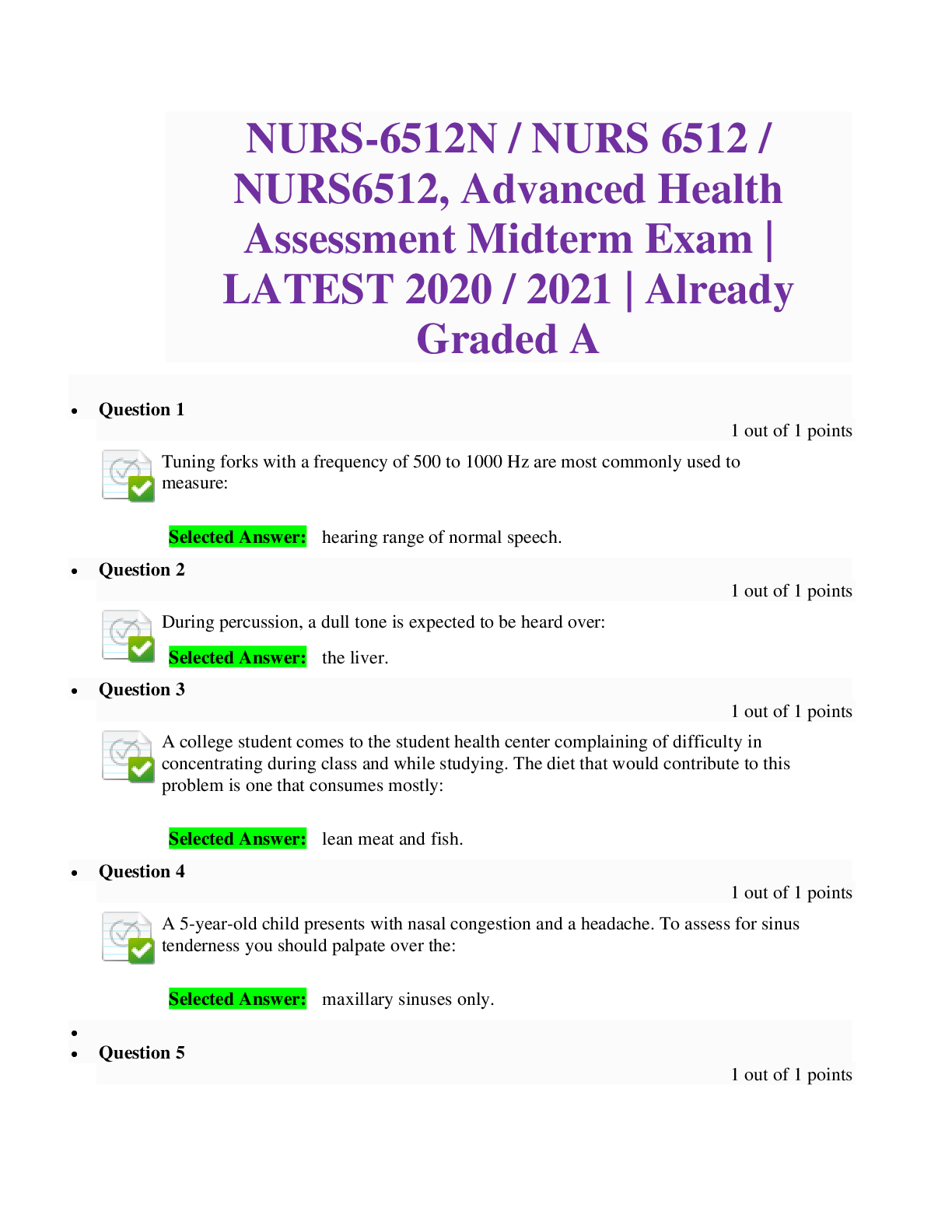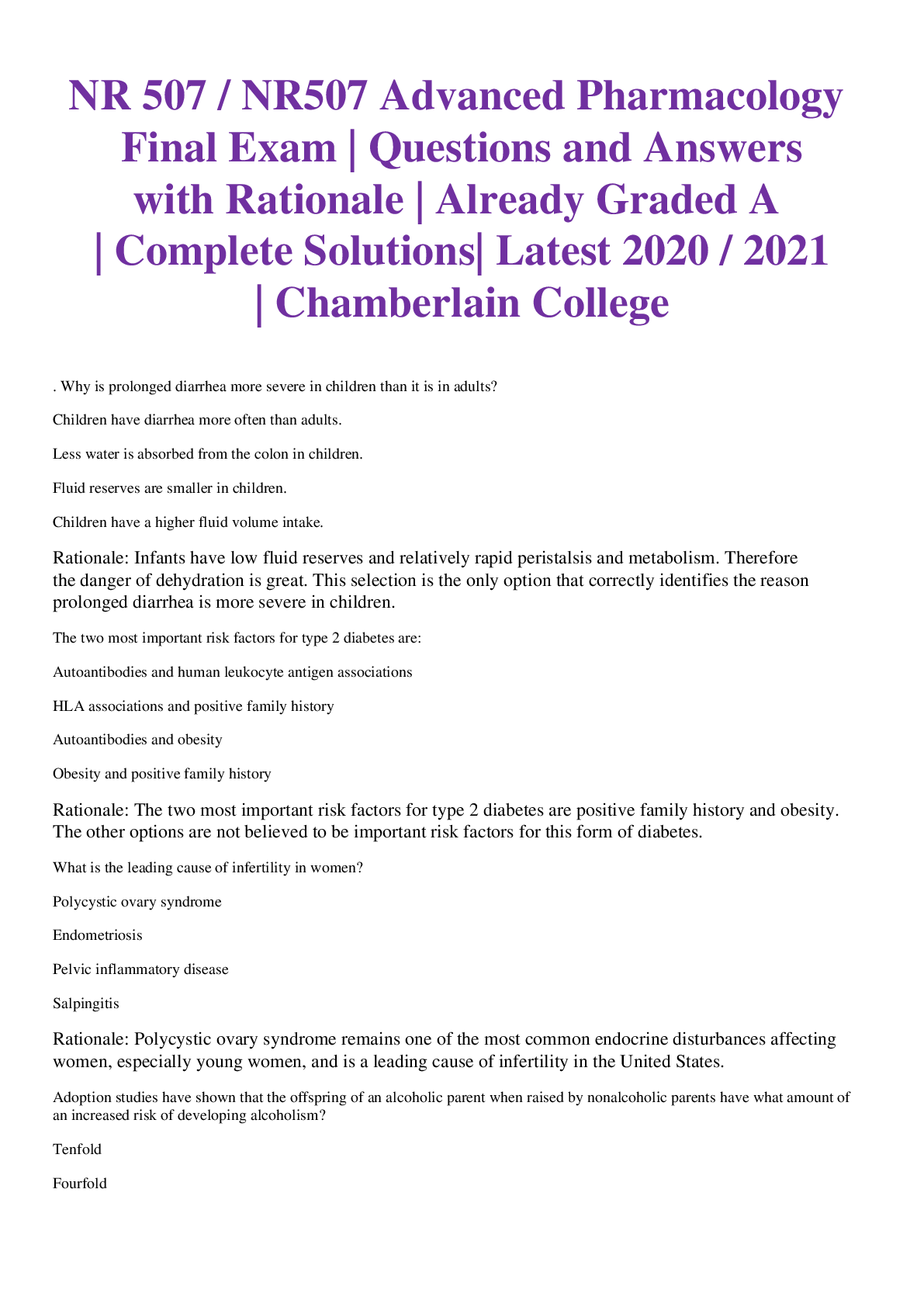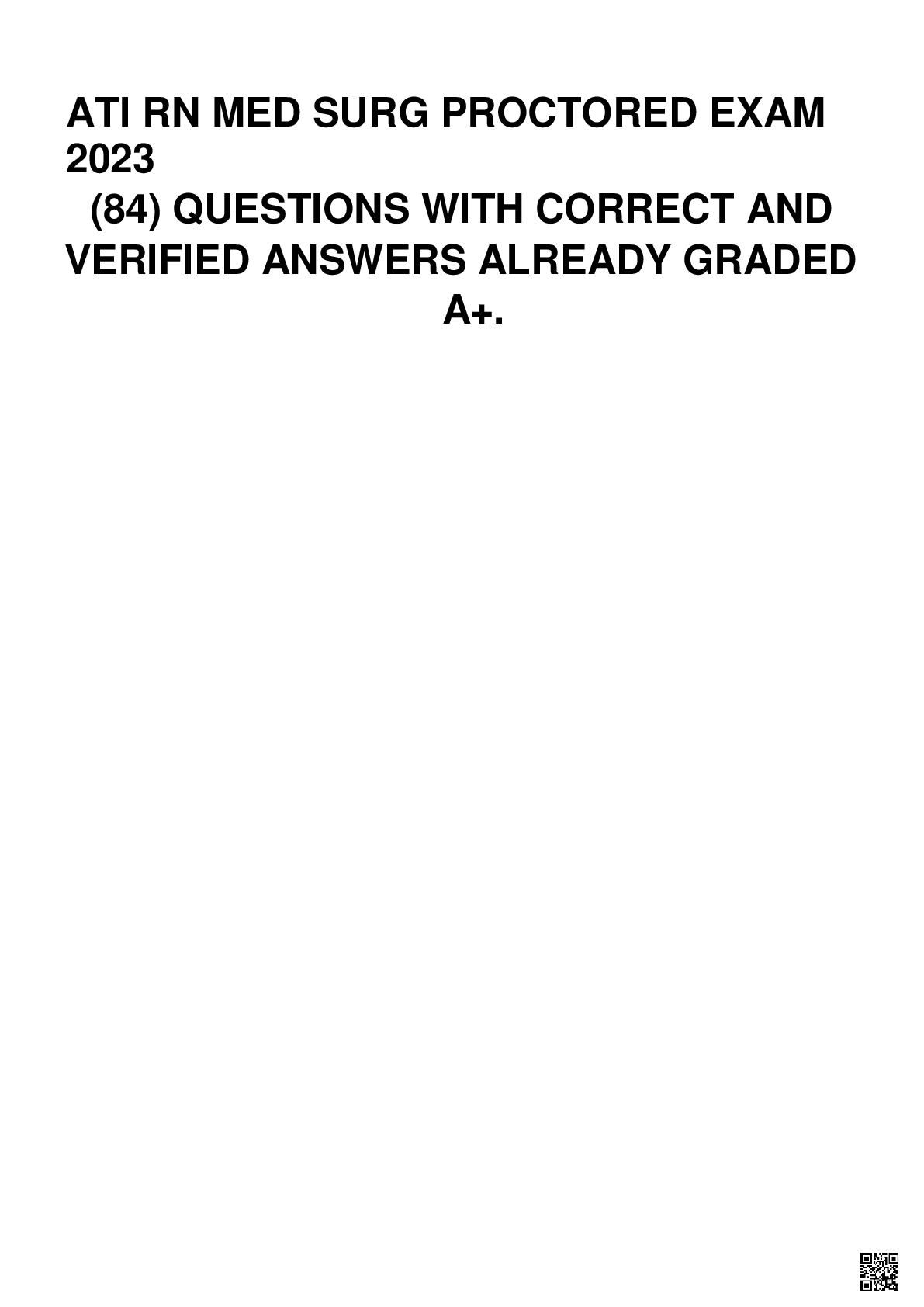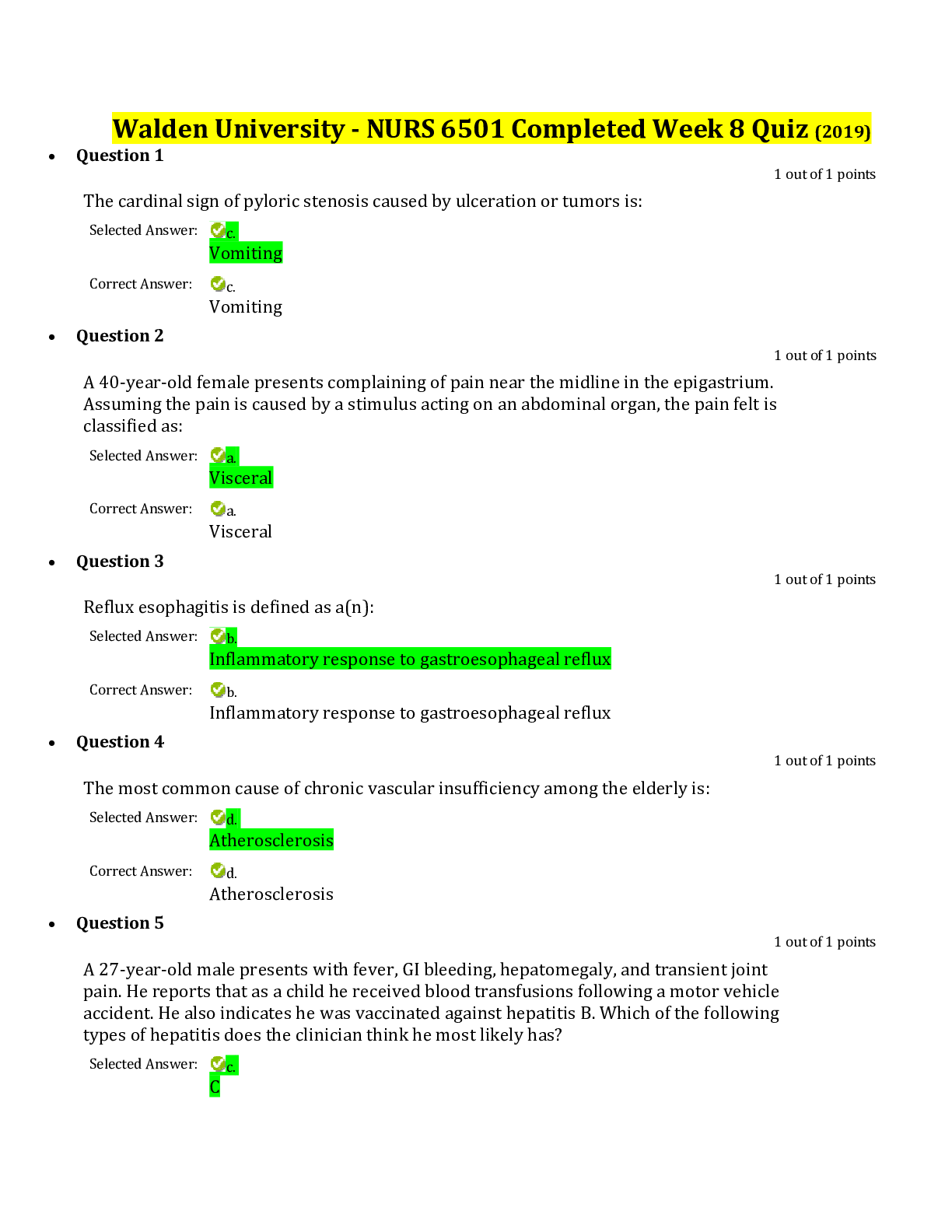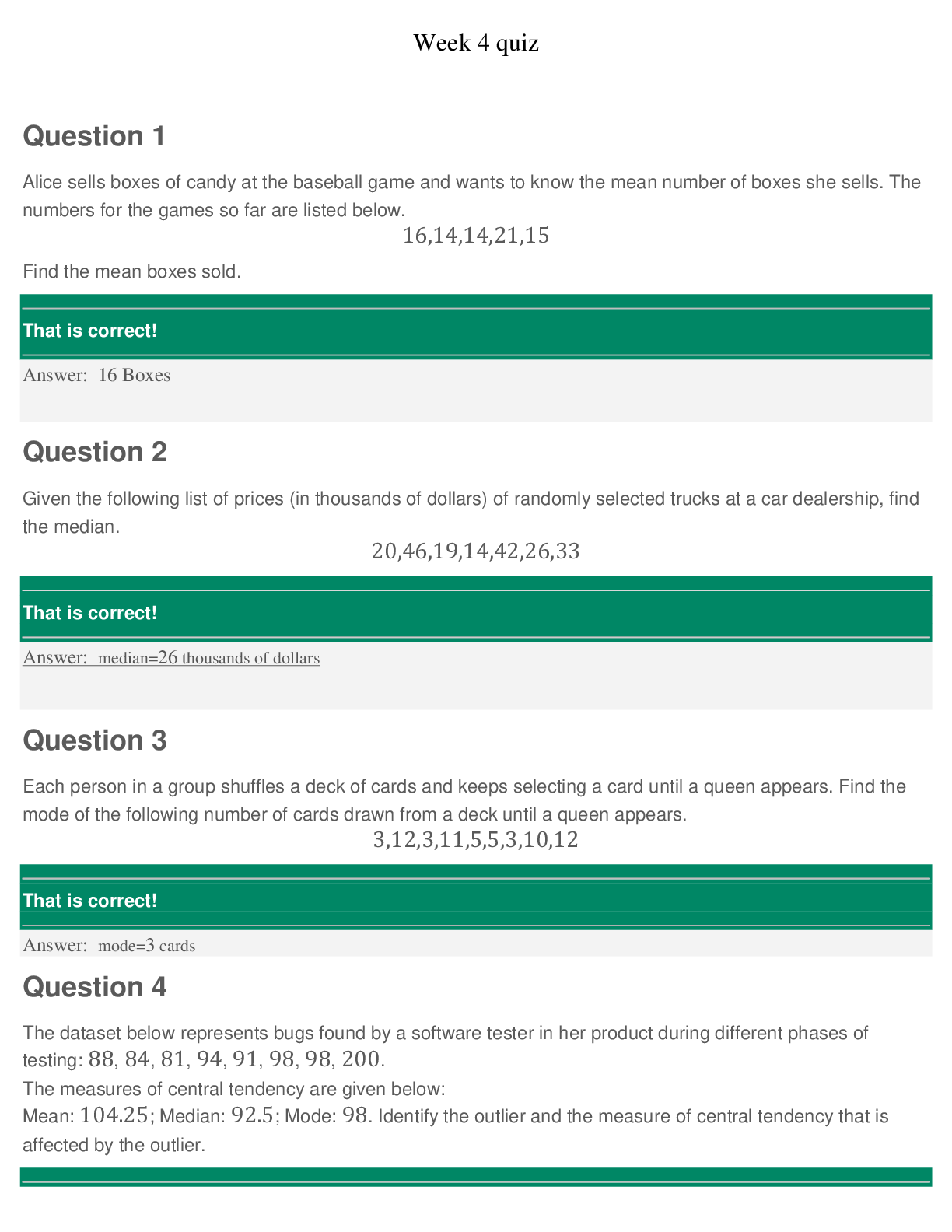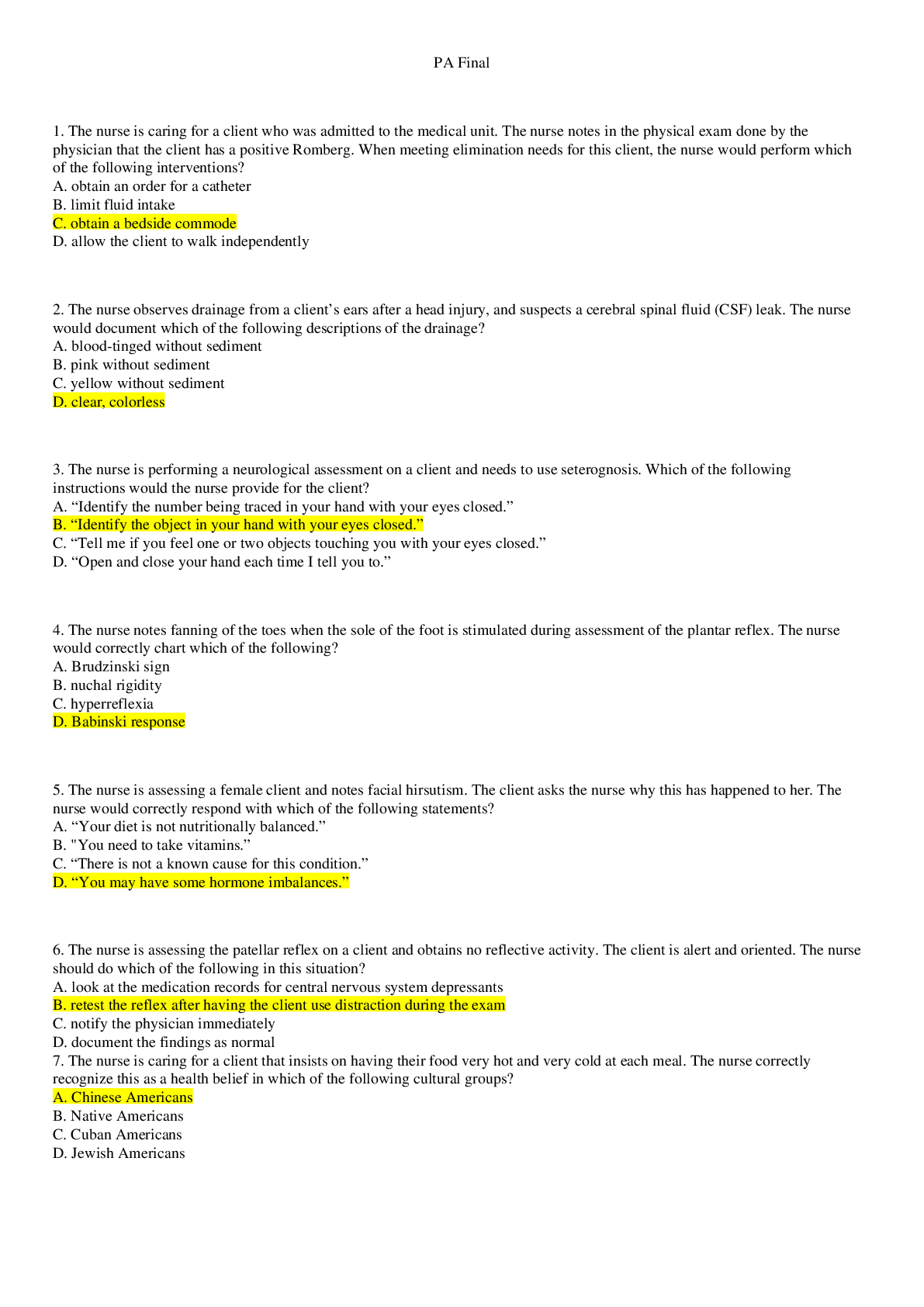*NURSING > EXAM > Case Study 99 - Severe Hypoglycemia Difficulty: Intermediate/ Already Graded A (All)
Case Study 99 - Severe Hypoglycemia Difficulty: Intermediate/ Already Graded A
Document Content and Description Below
Case Study 99 - Severe Hypoglycemia Difficulty: Intermediate Setting: Outpatient clinic Index Words: hypoglycemia, type 1 diabetes mellitus (DM), crisis management, insulin therapy Giddens Concepts : ... Metabolism, Glucose Regulation, Safety HESI Concepts: Metabolism, Glucose Regulation, Safety Scenario T.R. is a 19-year-old college freshman who lives in the honors dormitory. His friend finds him wandering aimlessly about the campus appearing pale and sweaty. He engages T.R. in conversation and walks him to the campus medical clinic, where you are on duty. The friend explains to you how he found T.R. and says T.R. is “diabetic” and takes insulin. T.R. is not wearing a medical warning tag. It is 1020. 1. What do you think is going on with T.R.? 2. What is the first action you would take? 3. Which assessment findings would support the premise that T.R. is experiencing a hypoglycemic reaction? 4. If no glucose meter were available, would you treat T.R. on the assumption he is hyperglycemic or hypoglycemic? Explain your reasoning. 5. It is 1025. T.R.’s glucose reading is 50 mg/dL (2.8 mmol/L). What should your next action be? - 6. When you enter the room to give the juice, T.R. is not responsive enough to drink the juice safely. What should you do? 7. T.R. is breathing at 16 breaths/min and has a pulse of 112 beats/min and regular. Because outpatient resources vary, describe your next actions if (1) your clinic is well equipped for emergencies or (2) your clinic has no emergency supplies. CASE STUDY PROGRESS A few minutes after administering 2 mg subcutaneous glucagon, T.R. begins to awaken. He becomes alert and asks where he is and what happened to him. You orient him and then explain what has transpired. 8. What questions would you ask to find out what precipitated this event? - 9. What further action do you need to take at this time? -pt education -further monitoring -reasses blood glucose level 10. At 1045, you recheck T.R.’s glucose and the reading is 64 mg/dL (3.6 mmol/L). His vital signs are 120/72, 18, 92. Has his status improved or not? Defend your response. Yes, but not by much. His glucose has improved but is still lower than the normal range. Vitals are normal, LOC improved 11. What would your next action be? -monitor glucose levels, continue to let the insulin get into the blood stream and monitor the levels -provide pt education -monitor pt safety -offer something more hardy to eat (pb and j) 12. At 1110, you recheck T.R.’s glucose and the reading is 104 mg/dL (5.8 mmol/L). [Show More]
Last updated: 1 year ago
Preview 1 out of 5 pages
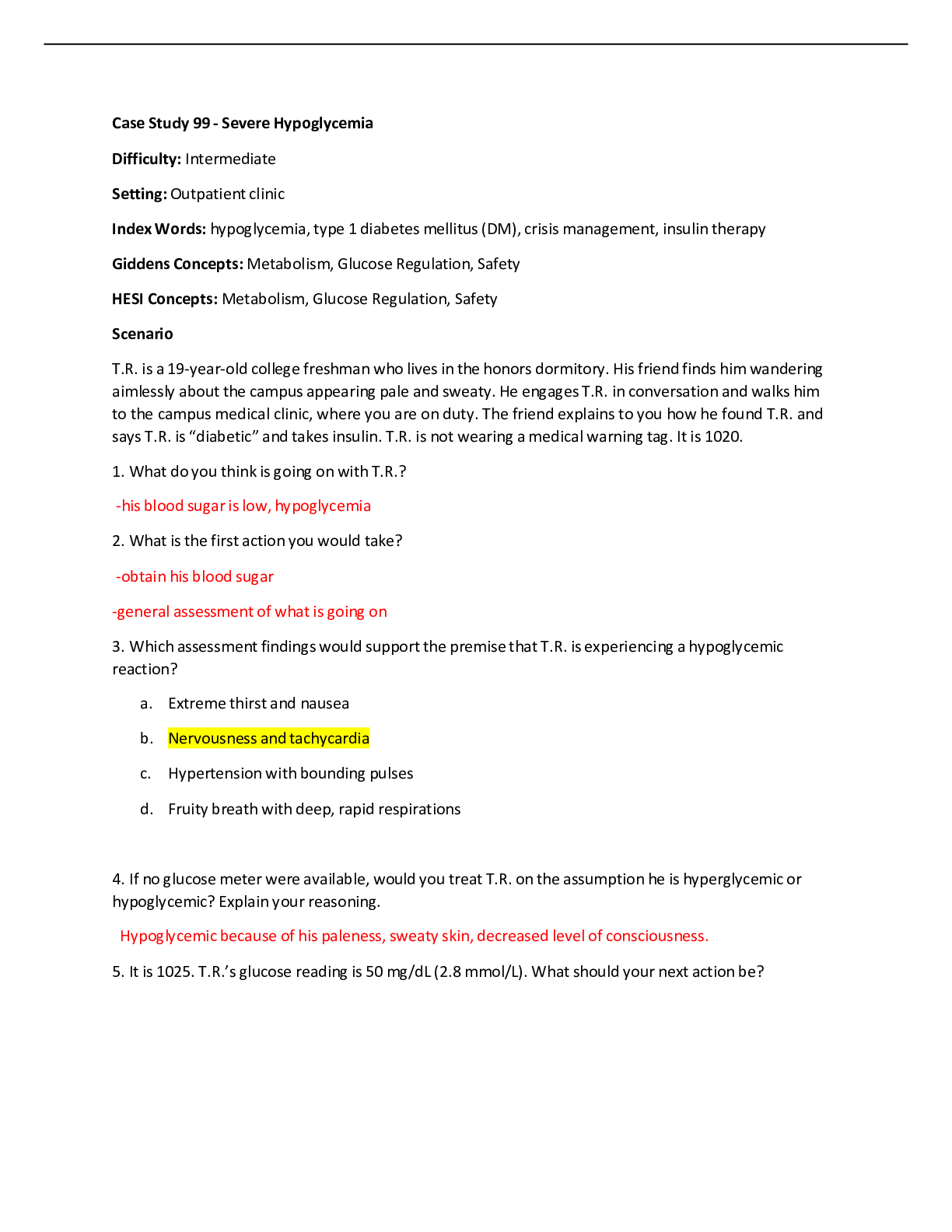
Reviews( 0 )
Document information
Connected school, study & course
About the document
Uploaded On
Jun 21, 2022
Number of pages
5
Written in
Additional information
This document has been written for:
Uploaded
Jun 21, 2022
Downloads
0
Views
35

 (1).png)
 (1).png)
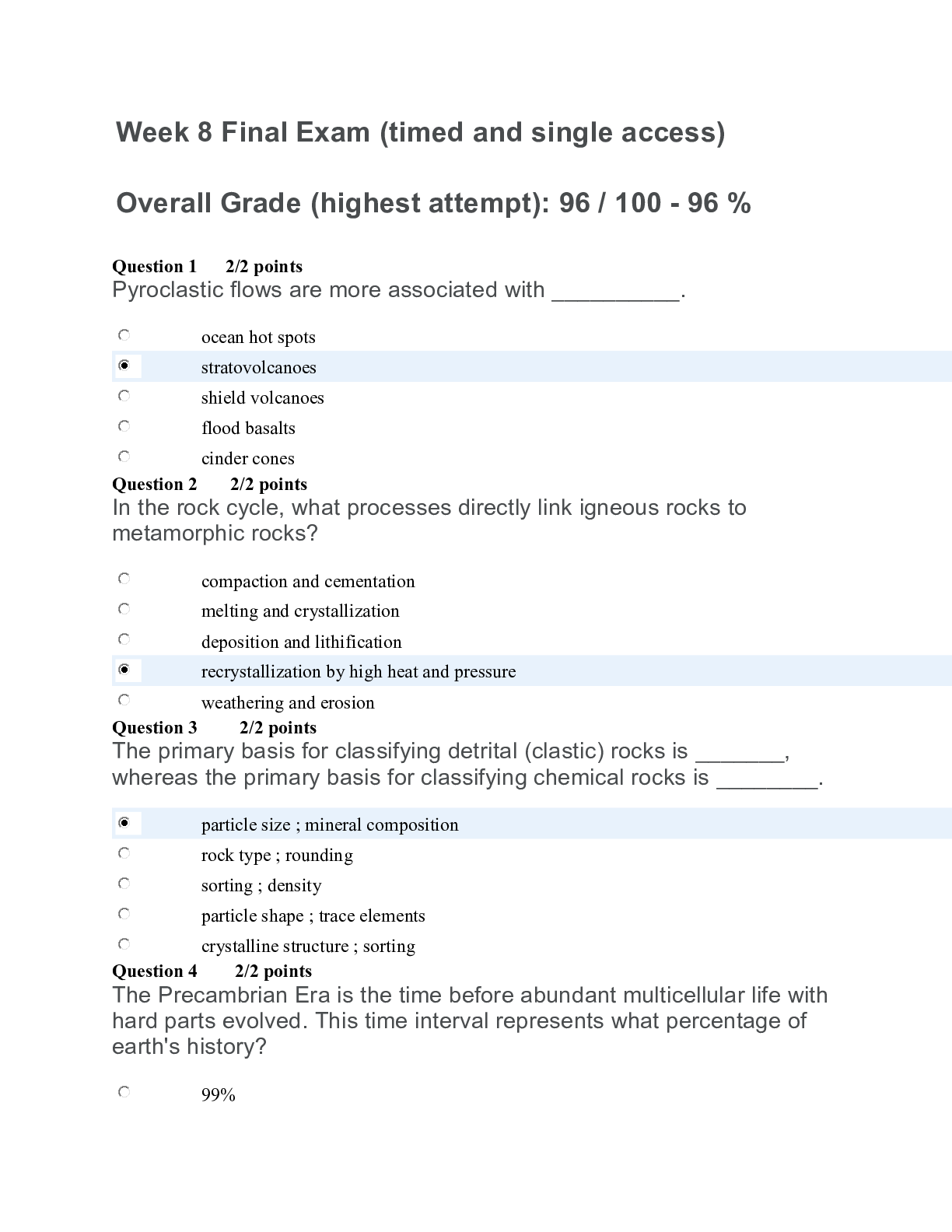
.png)
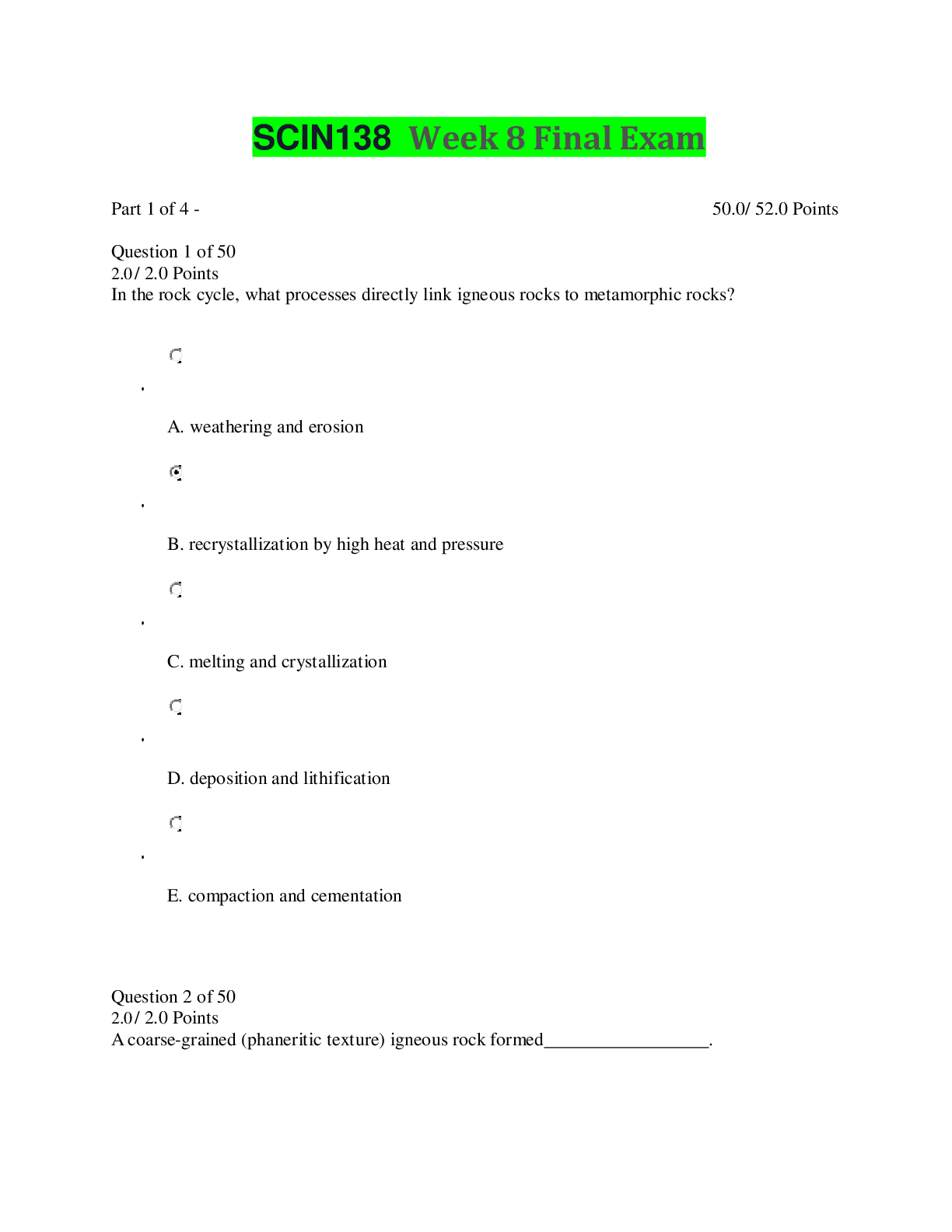
 (1).png)
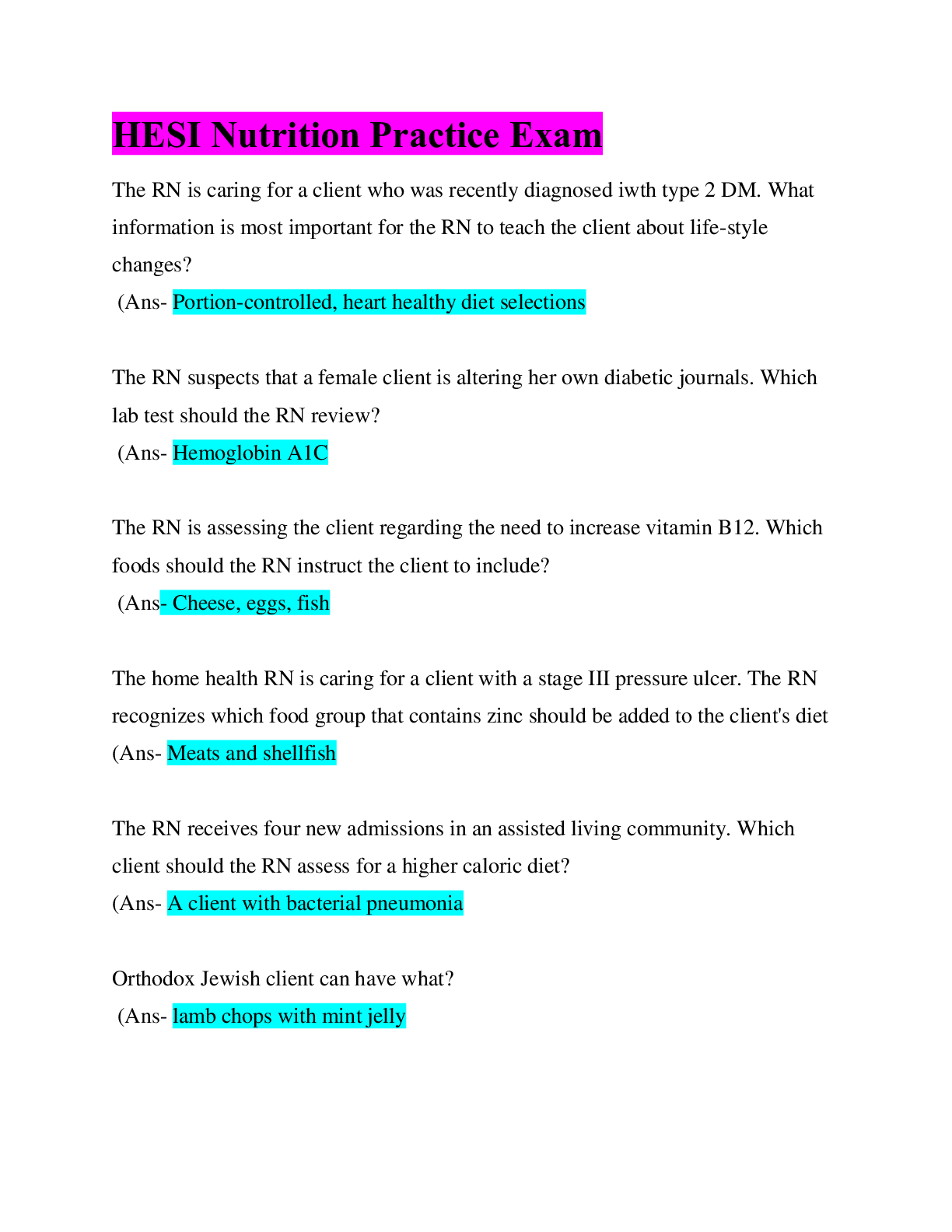
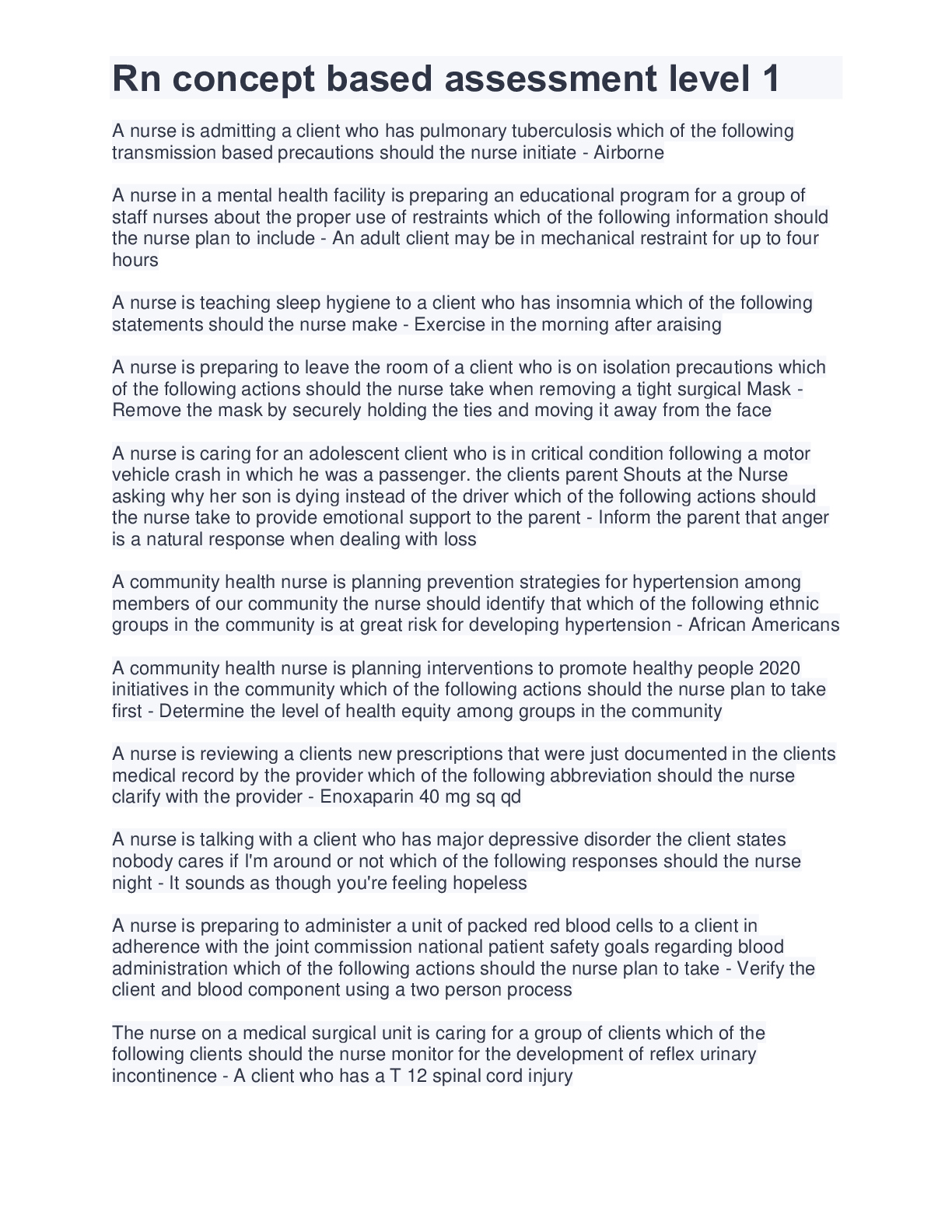
 (1).png)
